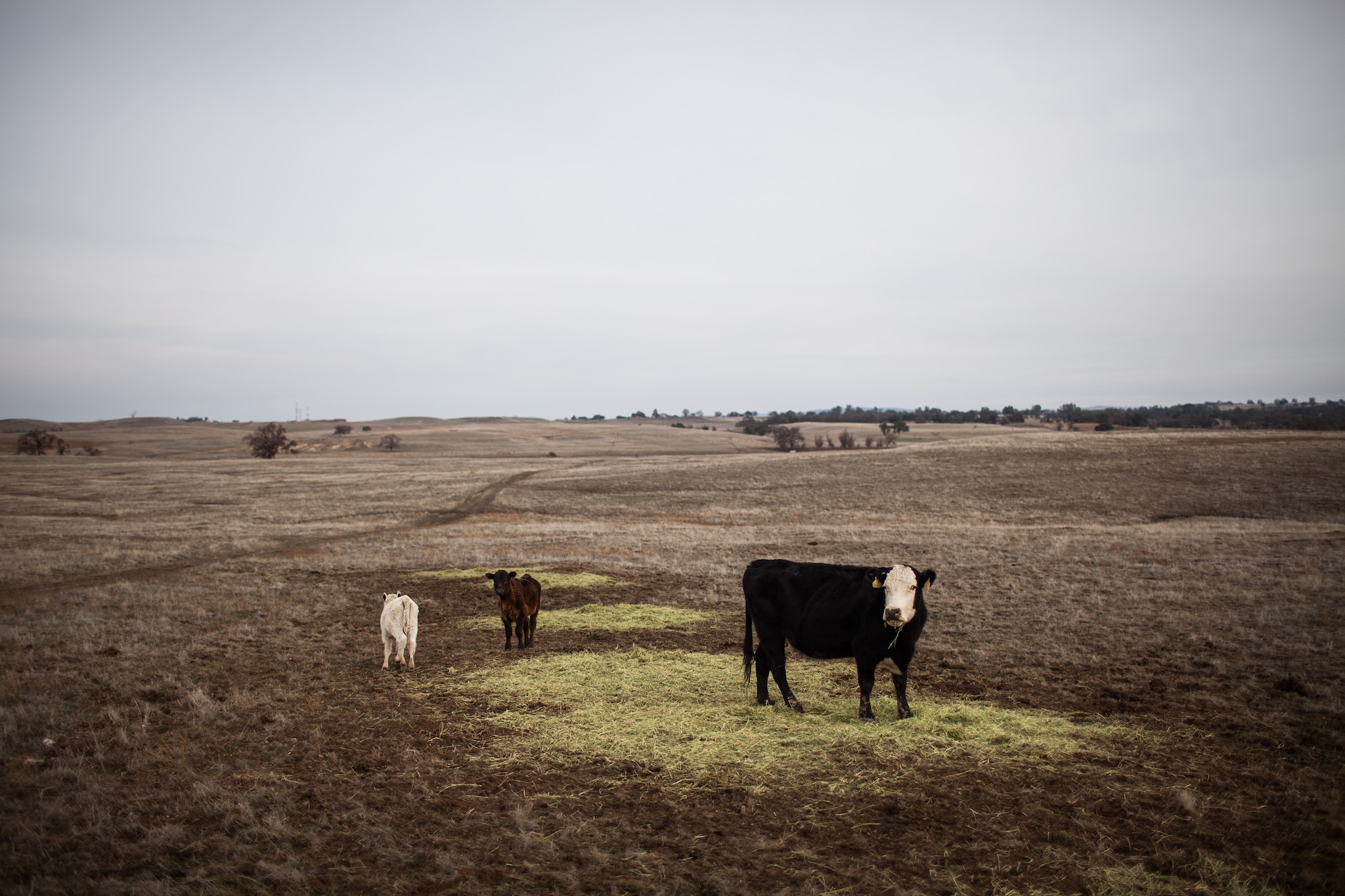
Drought in the American West • Max Whittaker
The American West is entering it’s fourth year of a historic drought. Climate change is playing a role, but there’s simply not enough water to support the increasing population and large-scale agriculture in what is essentially a desert.
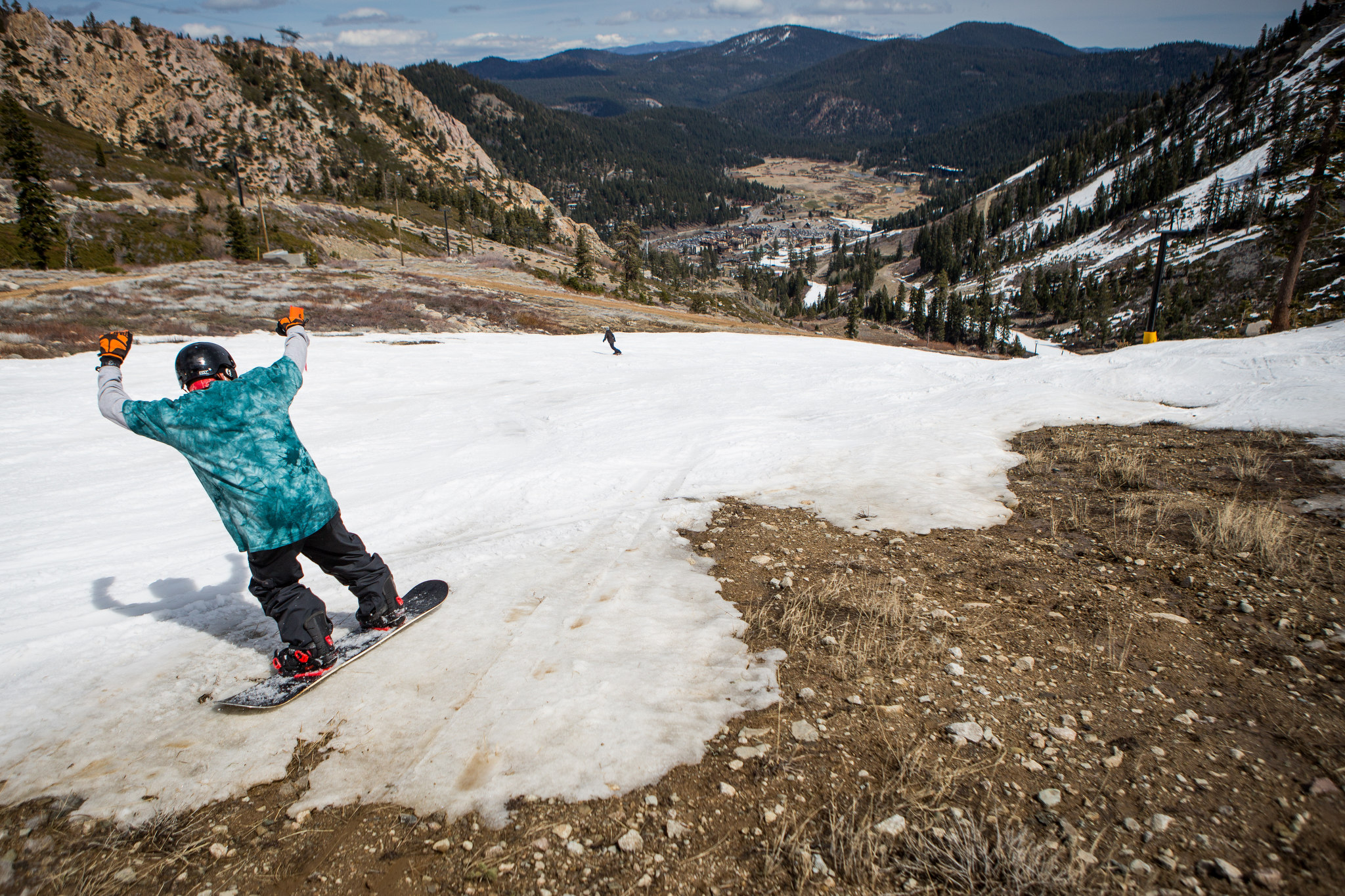
OLYMPIC VALLEY, CA- MARCH 21: A snowboarder threads his way through patches of dirt at Squaw Valley Ski Resort, March 21, 2015 in Olympic Valley, California. Many Tahoe-area ski resorts have closed due to low snowfall as California's historic drought continues. (Photo by Max Whittaker/Getty Images)
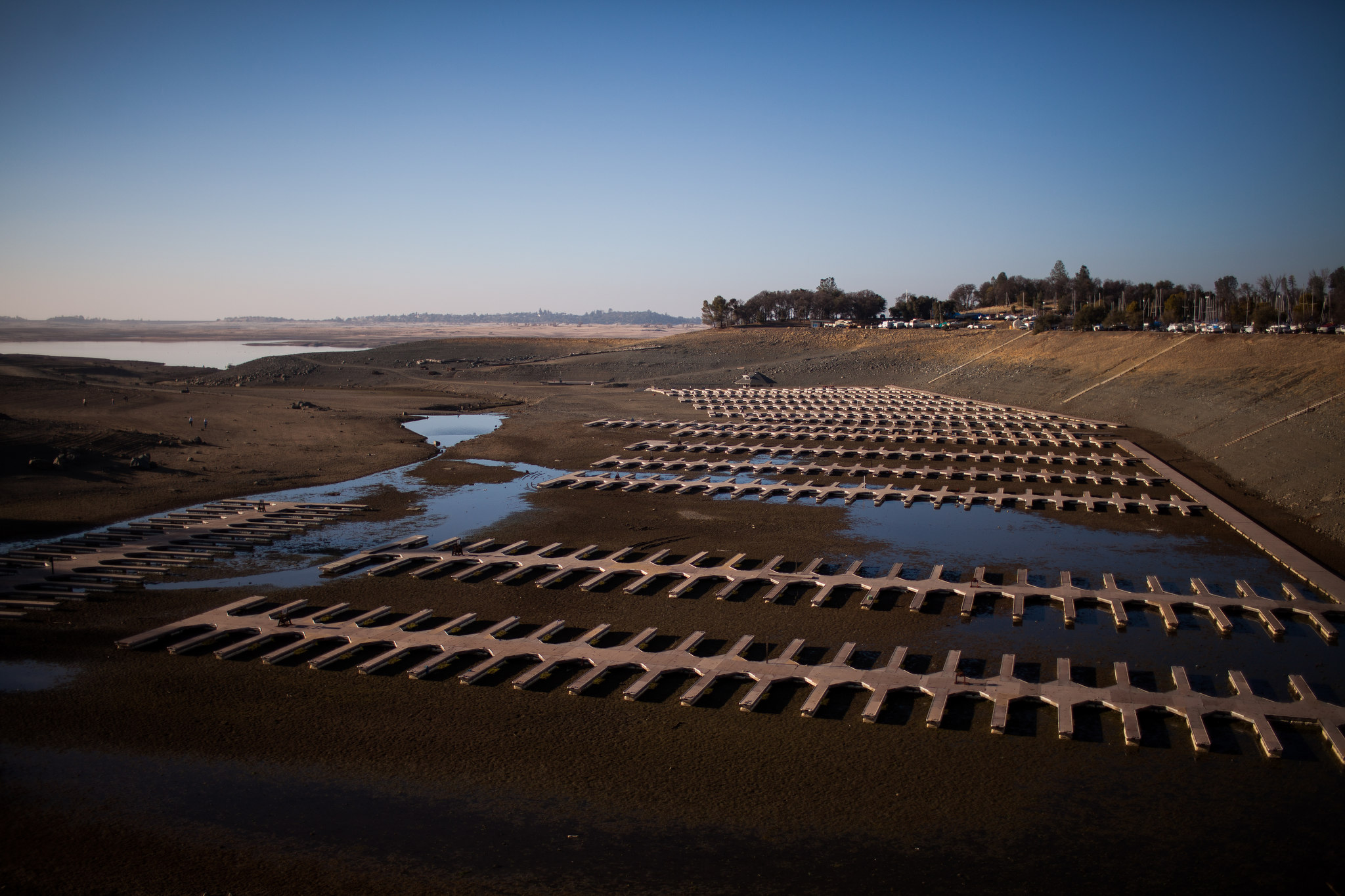
FOLSOM, CA - JANUARY 15, 2014: The Folsom Lake Marina sits on dry lakebed as the Folsom Lake reservoir drops to 18% capacity as an unseasonably dry winter in California stokes fears of a severe drought. CREDIT: Max Whittaker for The New York Times
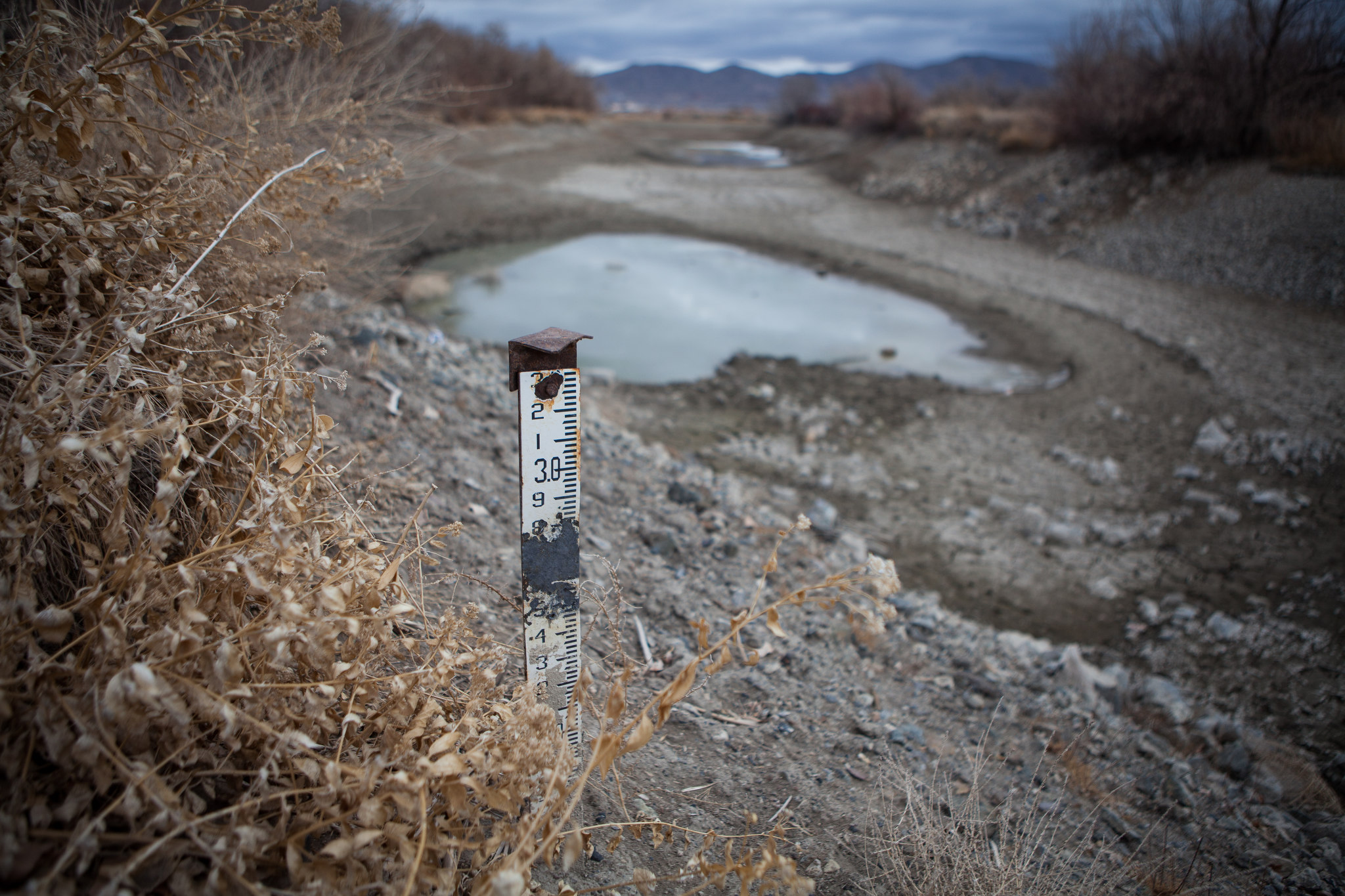
LOVELOCK, NV - JANUARY 29, 2014: A water gauge at Pitt Dam sits dry as a drought emergency is declared in Nevada. CREDIT: Max Whittaker for The New York Times
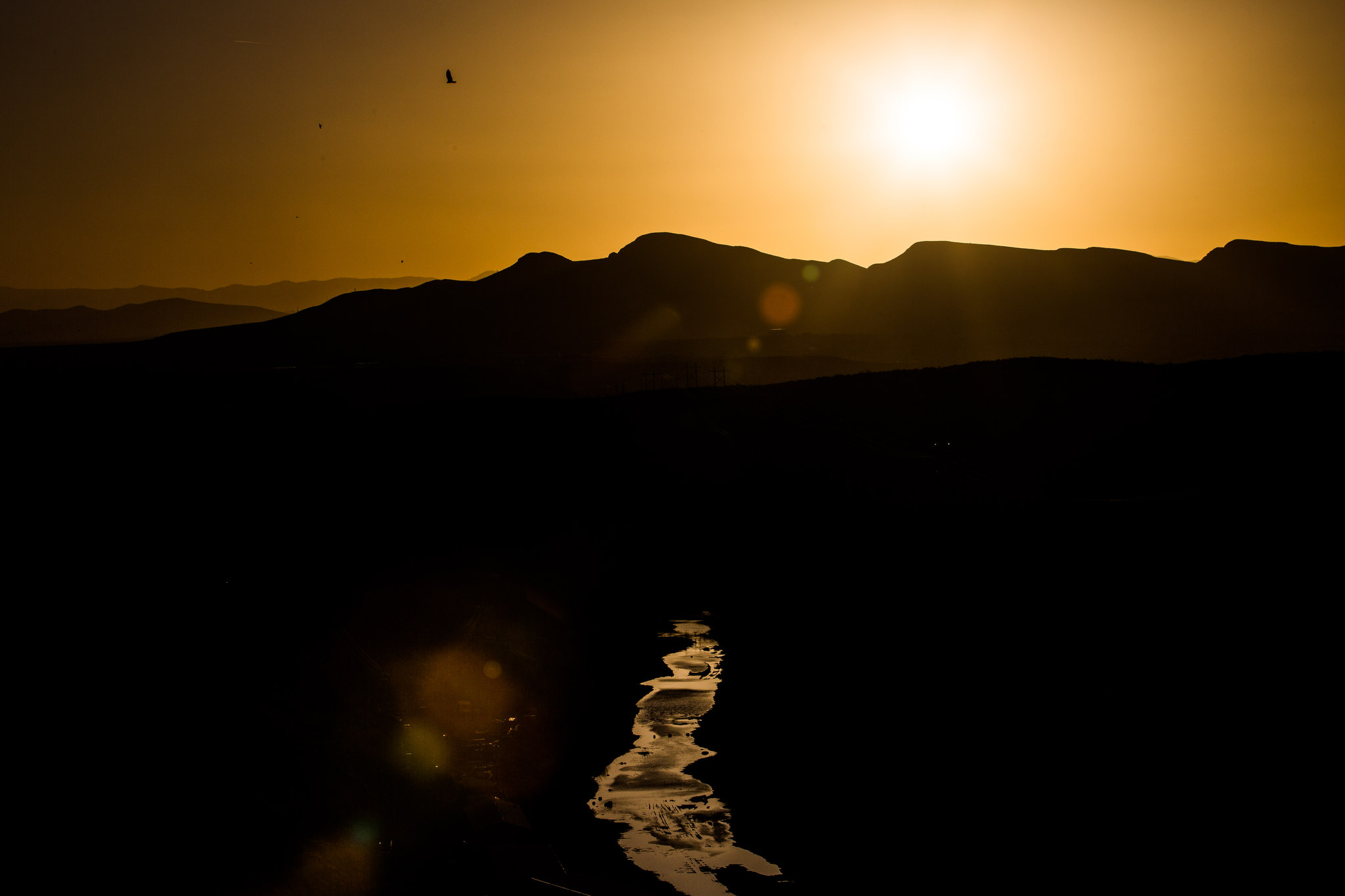
ELEPHANT BUTTE, NM - APRIL 9, 2015: The Rio Grande is barely a trickle as it exits the Elephant Butte Reservoir this time of year. The reservoir dams the Rio Grande River and at the time it was completed in 1916, it was the largest irrigation reservoir in the world. CREDIT: Max Whittaker for The New York Times
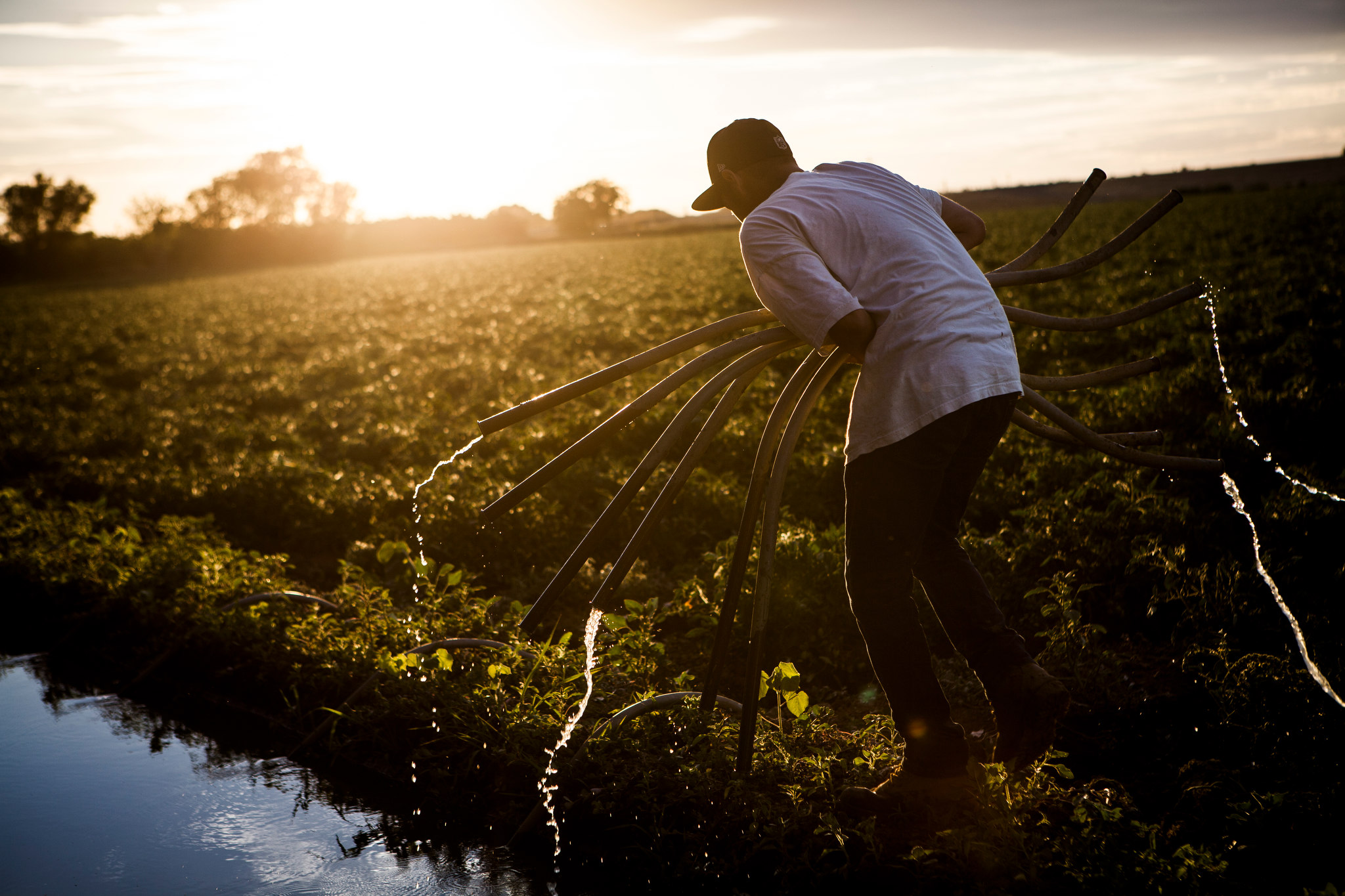
Luis Gasca picks up irrigation piping in tomato fields in Davis, California, June 26, 2014.
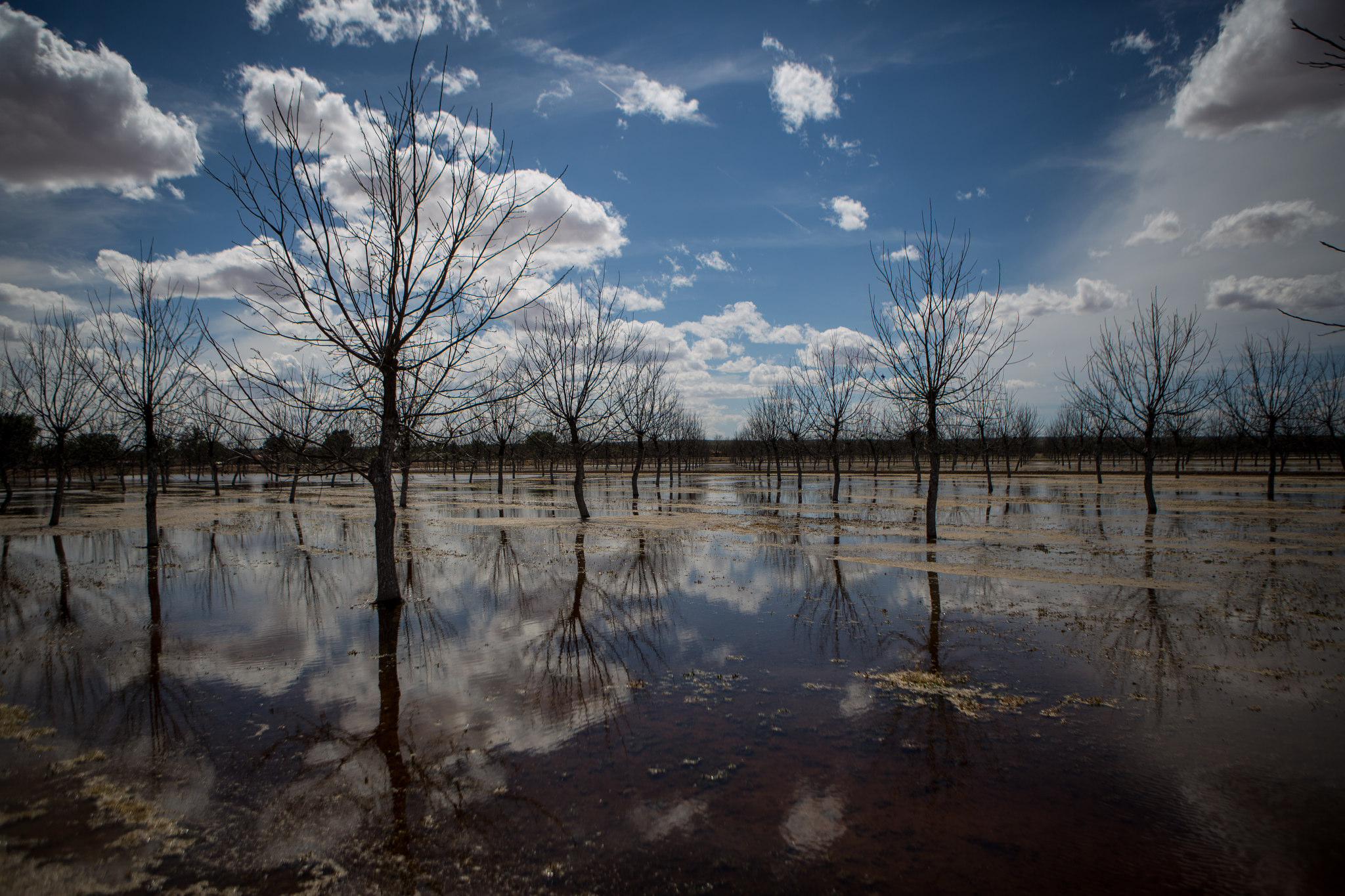
MESILLA, NM - APRIL 10, 2015: A pecan orchard is flood irrigated, one of the more inefficient ways to irrigate trees. CREDIT: Max Whittaker for The New York Times
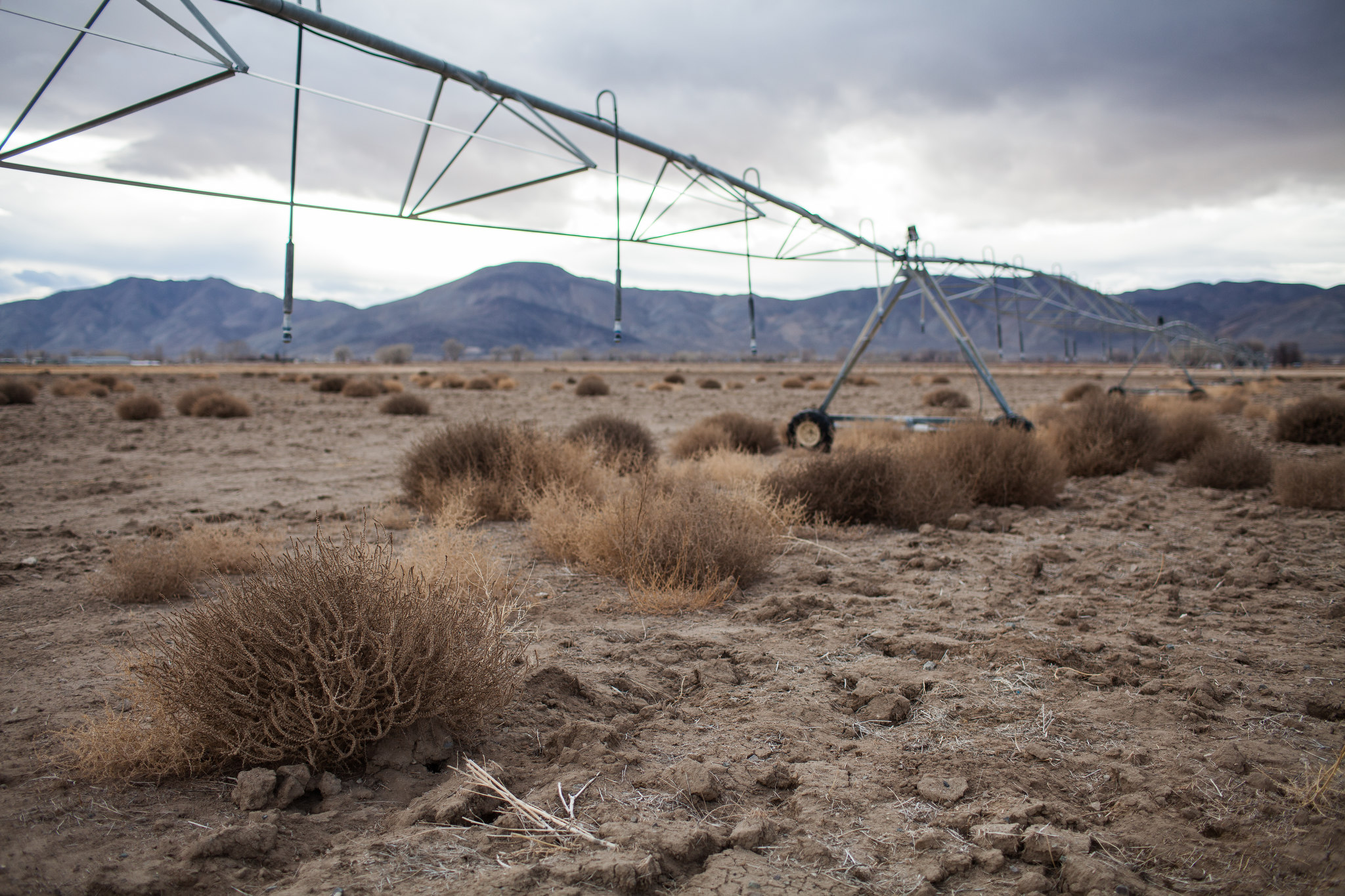
YERINGTON NV - JANUARY 29, 2014: Some of Darrell Pursel's alfalfa fields sit dry from lack of water as a drought emergency is declared in Nevada. Pursel's family has owned the ranch since 1863, and he can't remember a drought this bad. CREDIT: Max Whittaker for The New York Times
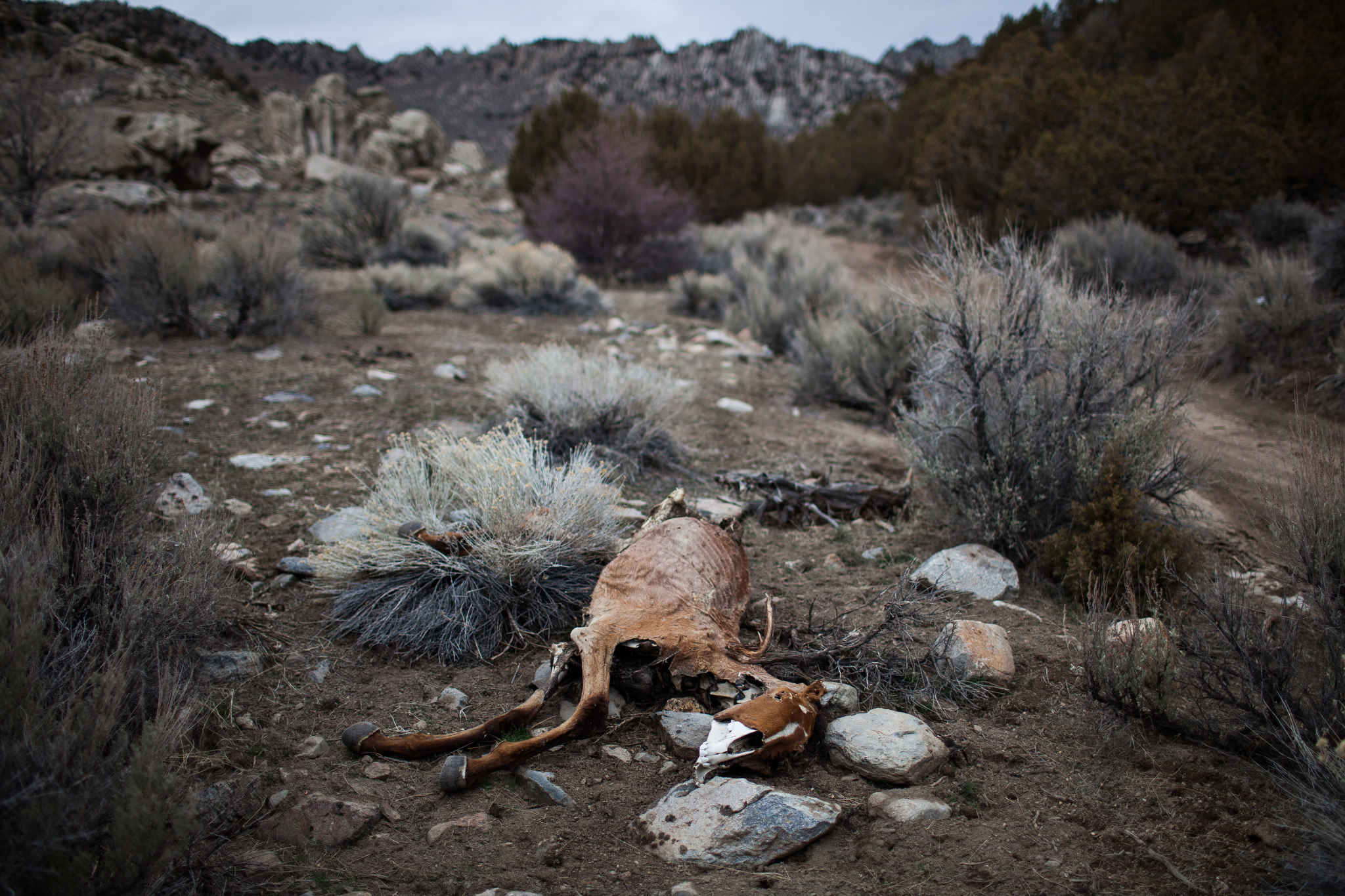
LOVELOCK, NV - JANUARY 29, 2014: A wild horse carcass decays in the desert as a drought emergency is declared in Nevada. CREDIT: Max Whittaker for The New York Times
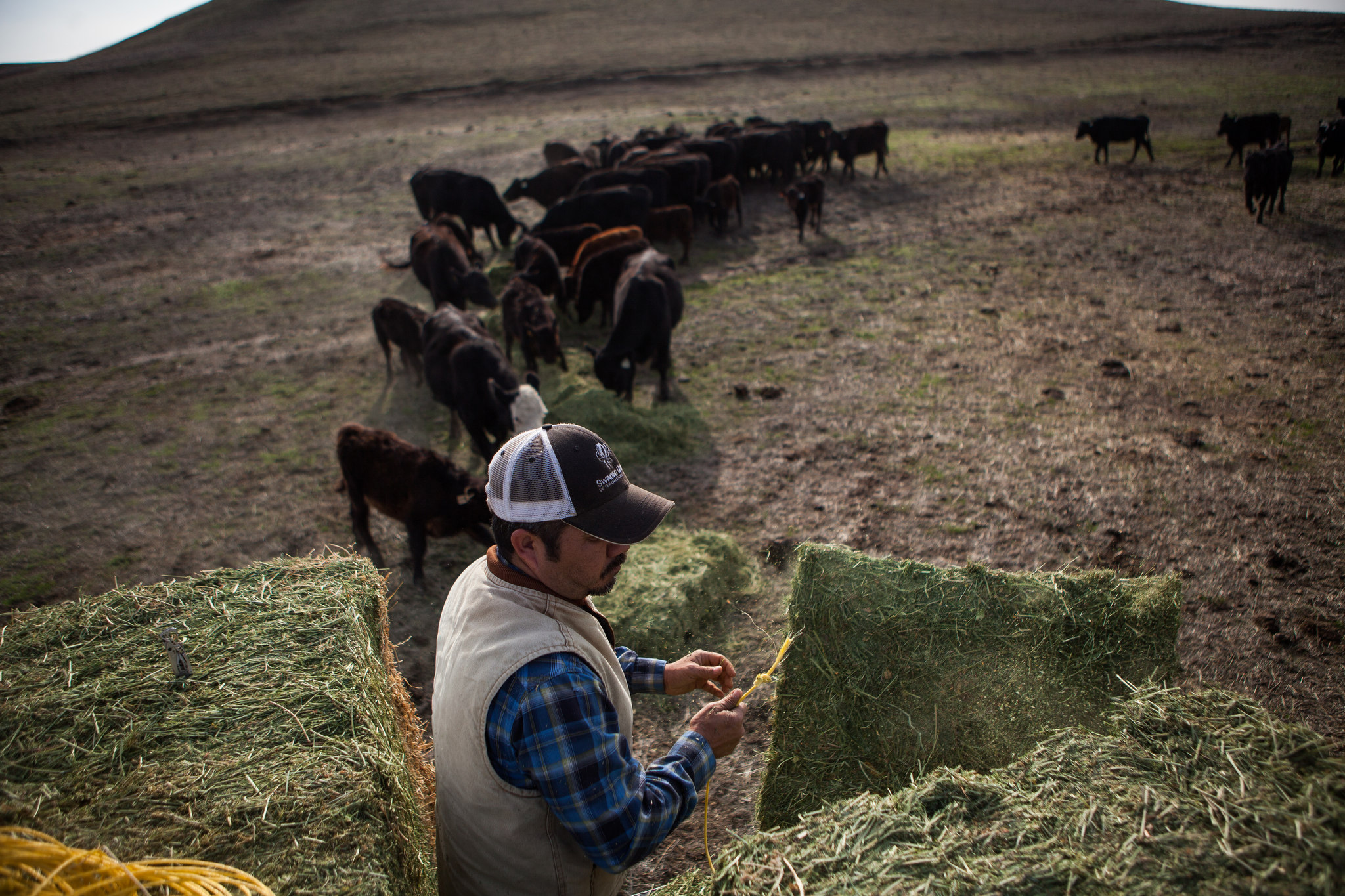
Ranch manager Jerry Spencer prepares to feed cattle at the Van Vleck Ranch in Rancho Murieta, California, February 12, 2014. California's ongoing drought has greatly increased feed costs for ranchers, forcing some to sell their cattle. Spencer has been feeding the ranch's cattle $1200 worth of hay per day, whereas in a normal year the cows would feed on grass for free.

FABENS, TX - APRIL 9, 2015: Bobby Scov redirects pumped groundwater into furrows on a cotton field on his farm. Scov farms 1500 acres of cotton, pecans and onions on the US-Mexico border. He has to rely exclusively on groundwater until he receives his surface water allotment in June. CREDIT: Max Whittaker for The New York Times

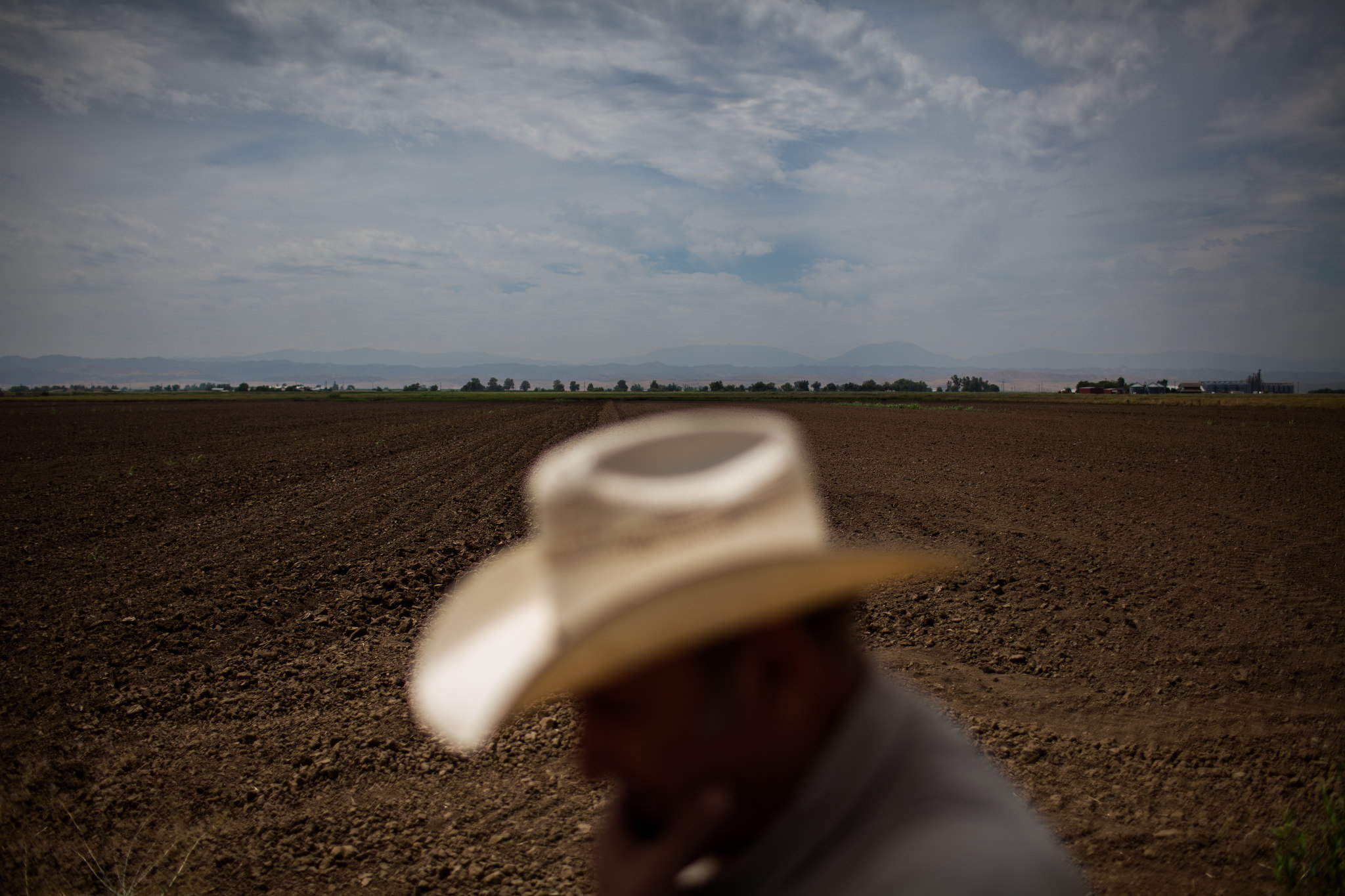
MAXWELL, CA - AUGUST 12: Joe Carrancho has had to fallow 25% of his rice acreage due to a lack of water. (Photo by Max Whittaker/Prime for The Washington Post)
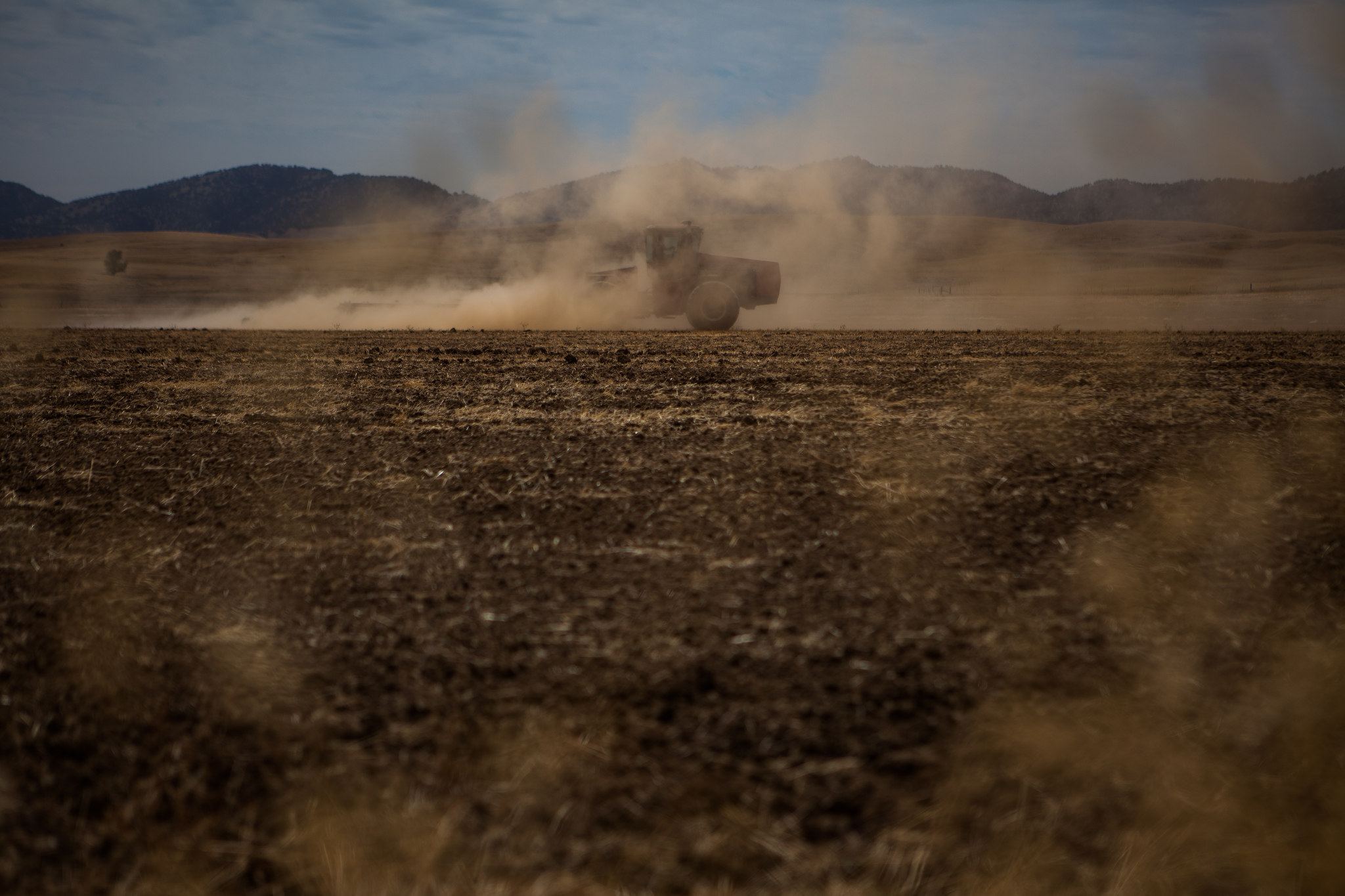
MAXWELL, CA - AUGUST 12: Dust blows around a farmer as he discs a dry, fallowed field. (Photo by Max Whittaker/Prime for The Washington Post)
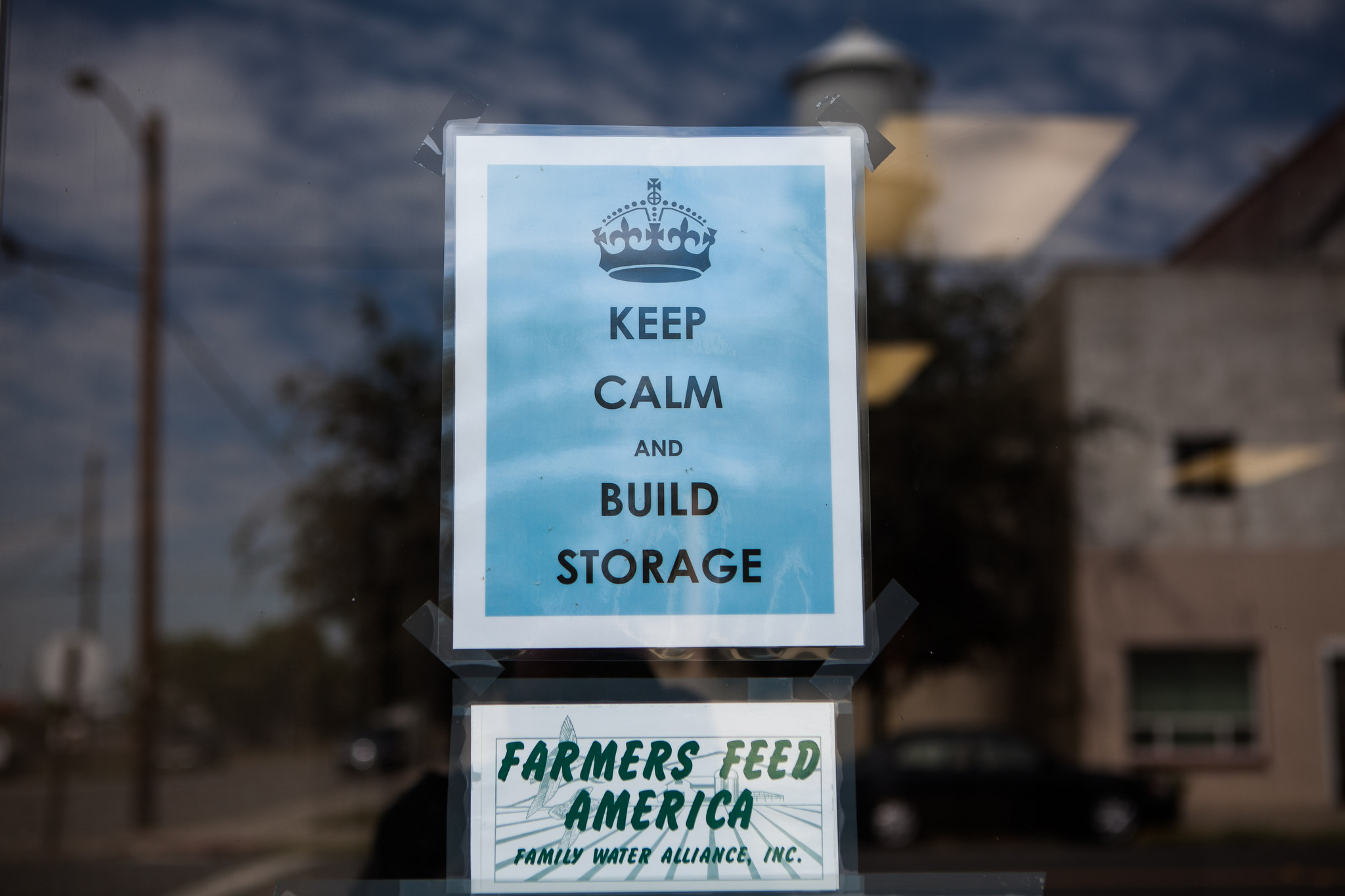
MAXWELL, CA - AUGUST 12: A sign on the door of the Family Water Alliance advocates for more reservoirs. (Photo by Max Whittaker/Prime for The Washington Post)
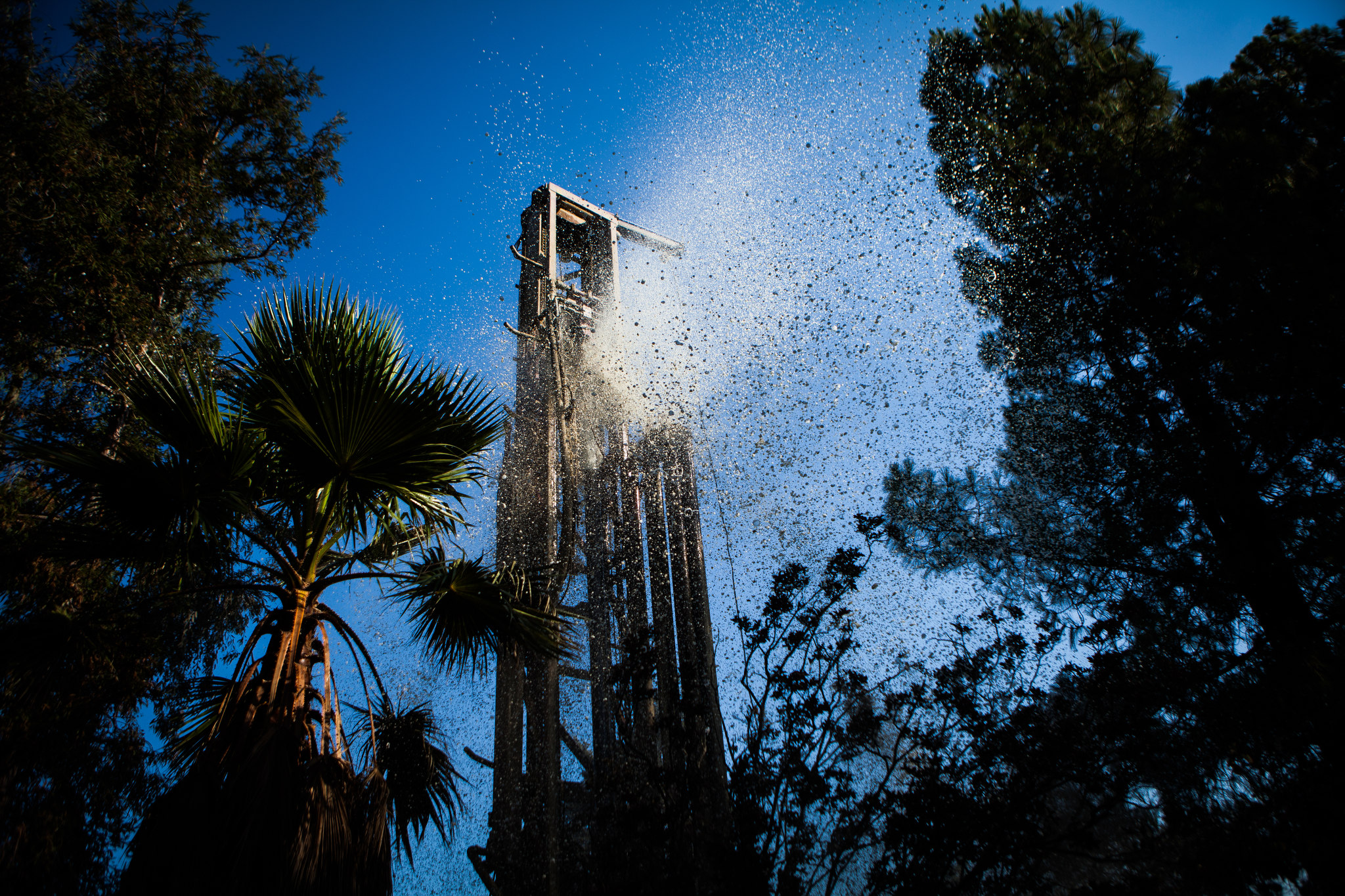
Water and mud blows out of the top of a drill as Diamond Well Drillers drill to deepen the Brady family well in Woodland, California, August 20, 2014. The Brady's home well went dry almost two months ago and Theresa Brady called 65 well drillers before finding one available to deepen their well.
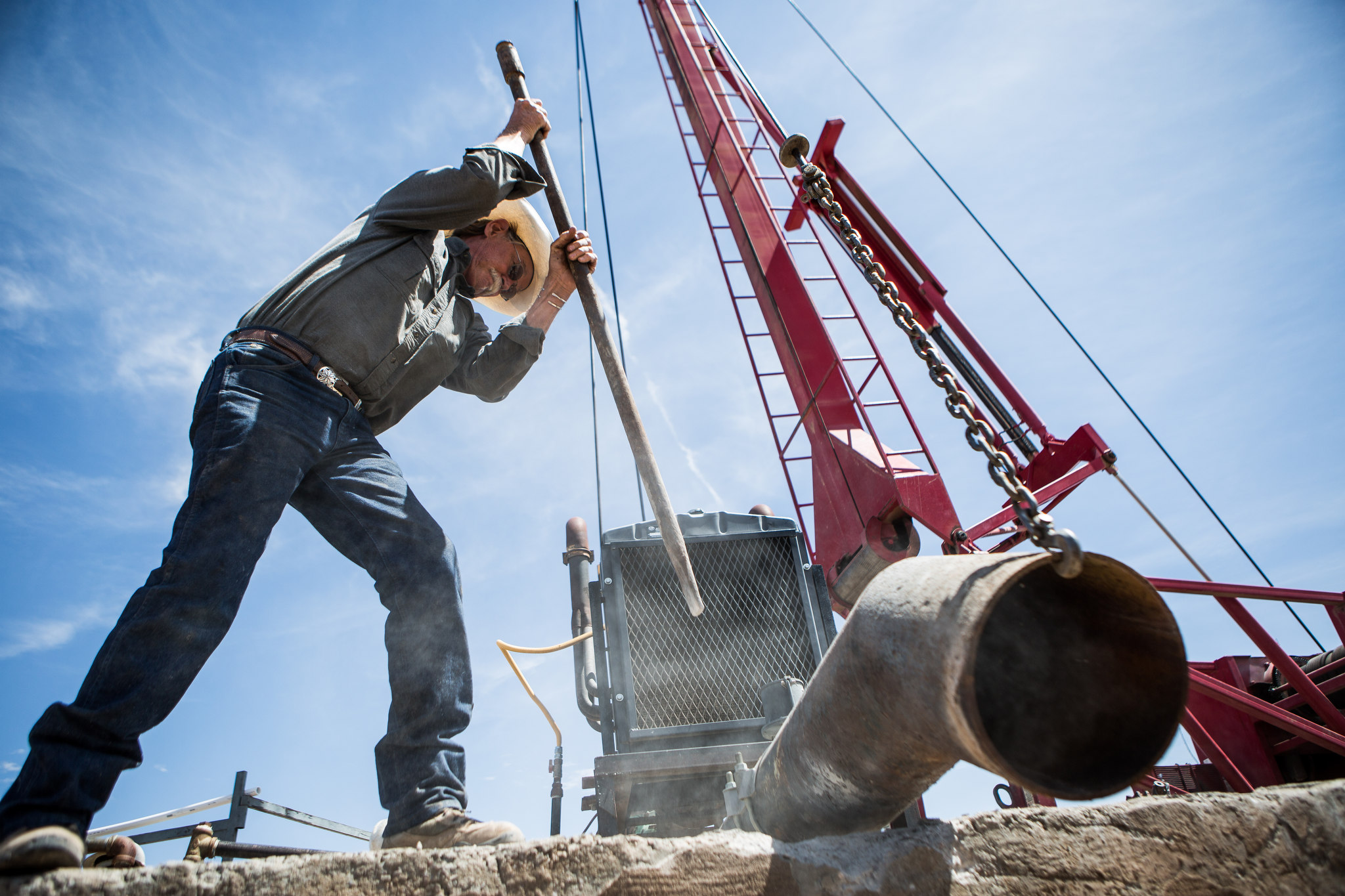
LA MESA, NM - APRIL 10, 2015: Phil Archer chisels concrete to get a outlet to fit on a partially collapsed well on his farm. Archer will have to replace the well soon, one of two on his farm. CREDIT: Max Whittaker for The New York Times
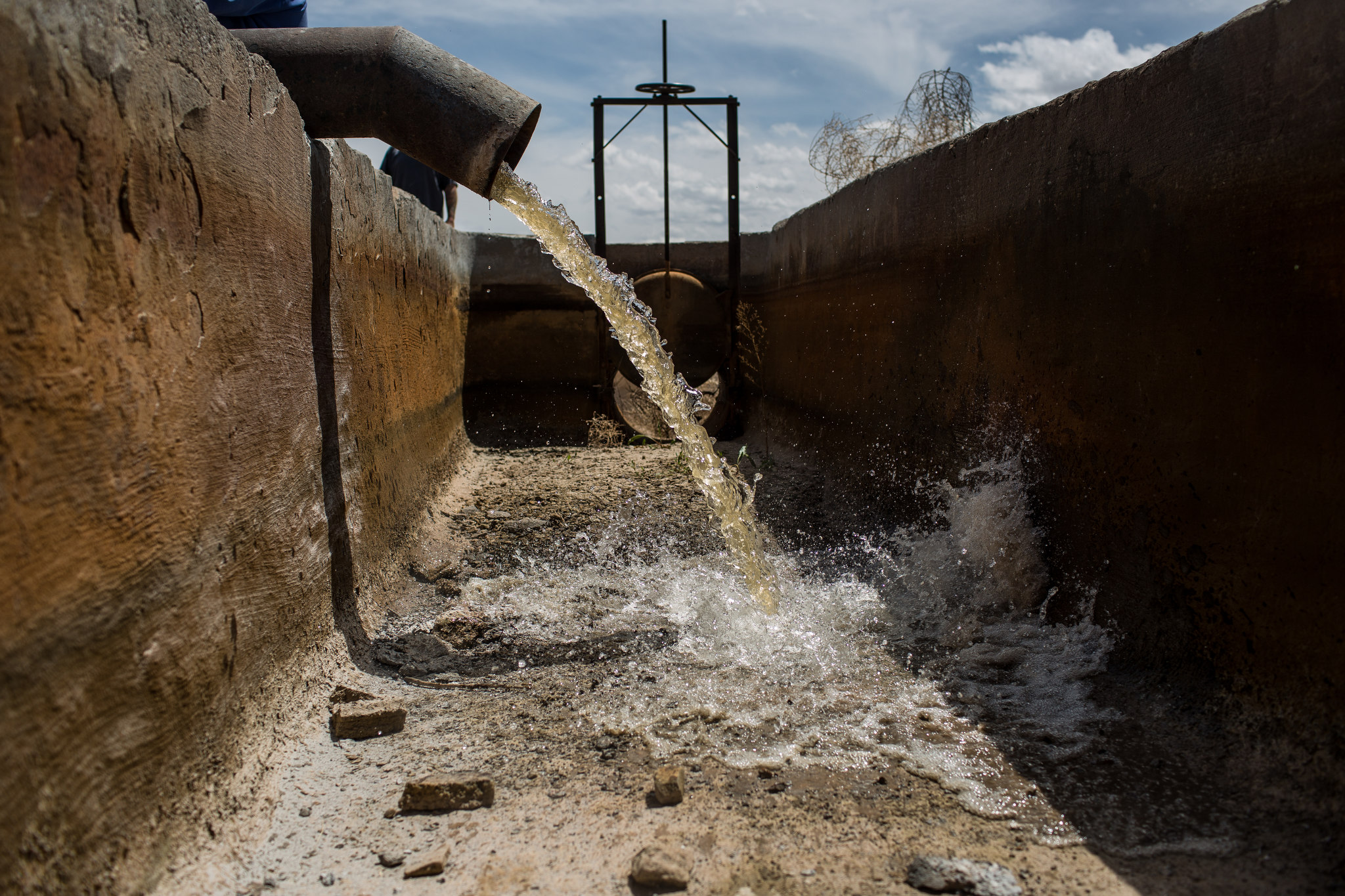
LA MESA, NM - APRIL 10, 2015: A partially collapsed well is repaired enough to get some water flow on Phil Archer's farm. Archer will have to replace the well soon, one of two on his farm. CREDIT: Max Whittaker for The New York Times
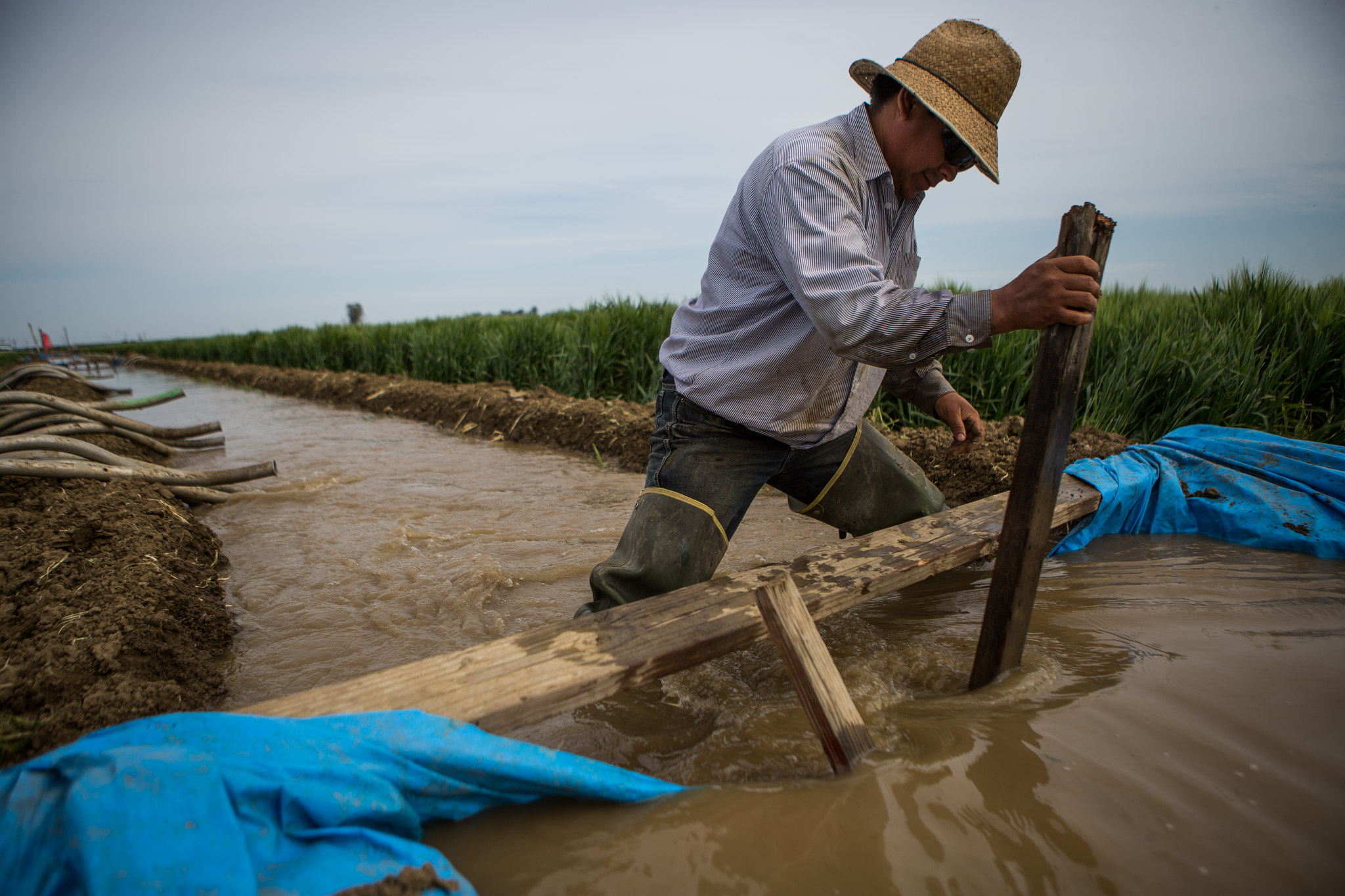
ZAMORA, CA - APRIL 4, 2015: Juan Silva manages a temporary dam delivering groundwater to a barley field on Fritz Durst's farm. Durst farms 12 different crops and raises cattle on 6000 acres. CREDIT: Max Whittaker for The New York Times
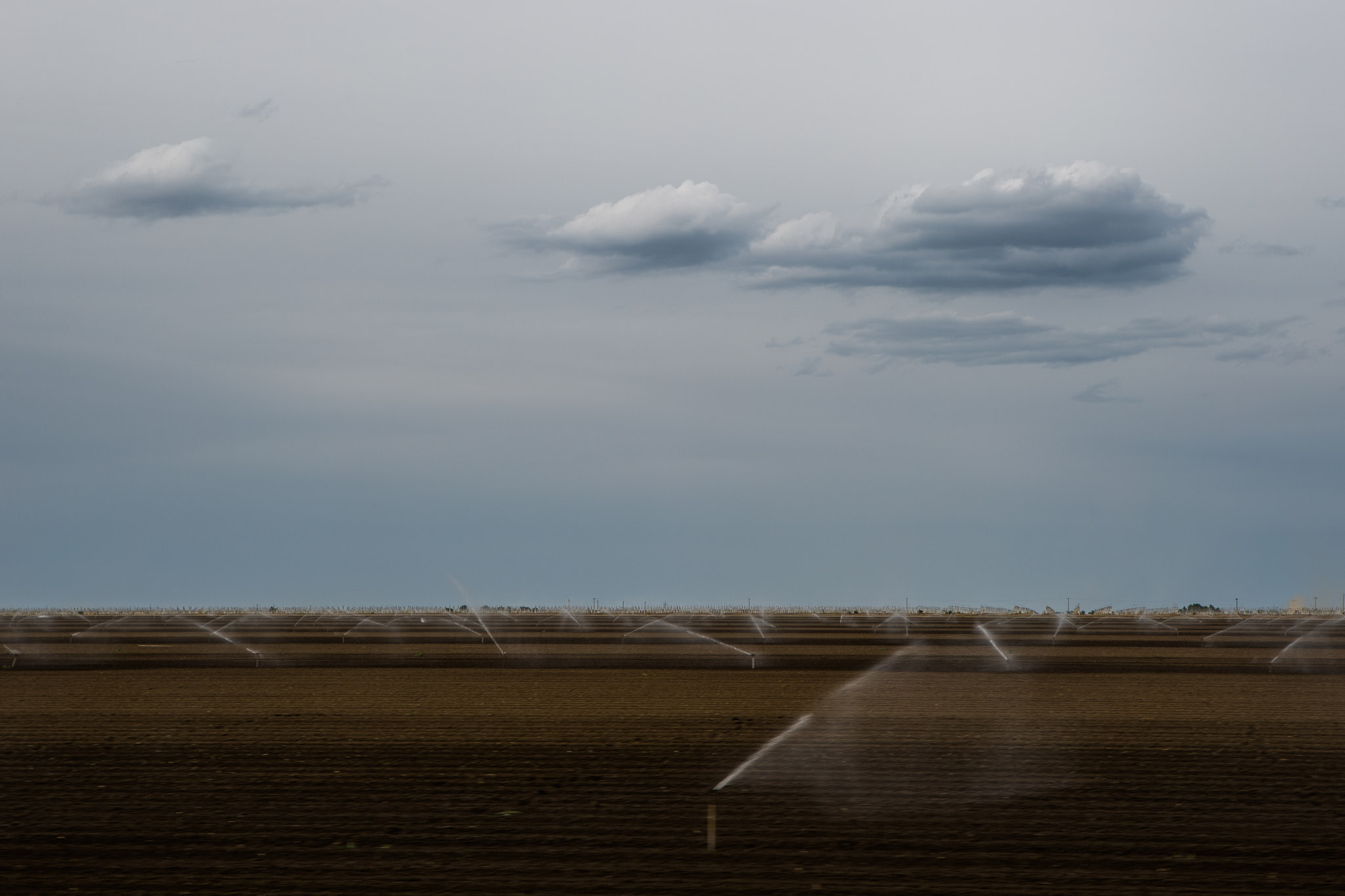
DUNNIGAN, CA - APRIL 4, 2015: Sprinklers irrigate a freshly planted field. CREDIT: Max Whittaker for The New York Times
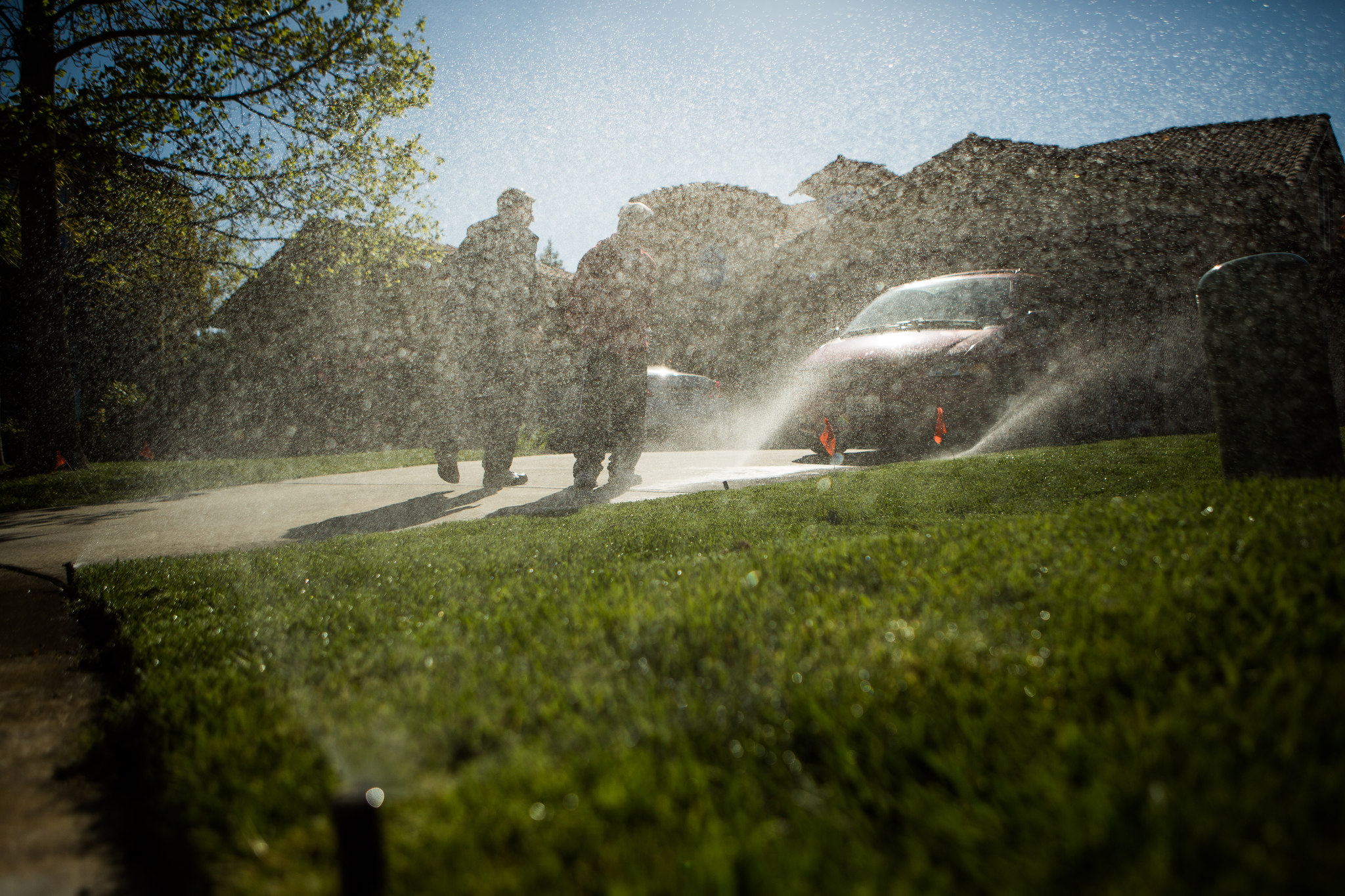
SACRAMENTO, CA - APRIL 2, 2015: City of Sacramento Water Conservation Specialist Alek Crnogorac and Steve Wong check out the sprinkler system in Wong's front yard. CREDIT: Max Whittaker for The New York Times
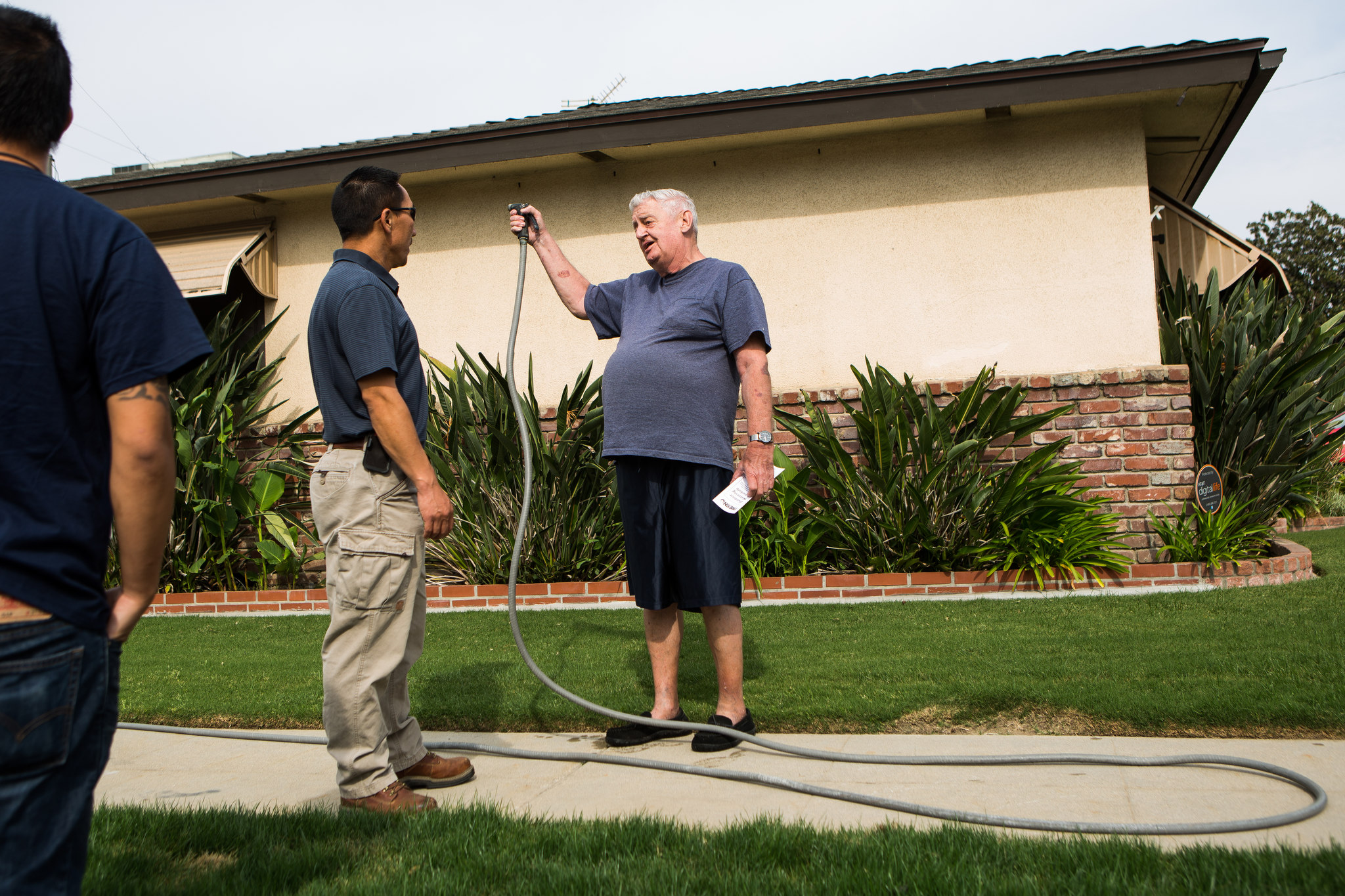
FRESNO, CA - APRIL 22, 2015: Fresno Water Conservation Representative Tou Moua, left, confronts Jim Kjer, right, after spotting him watering his lawn during the day. CREDIT: Max Whittaker for The New York Times
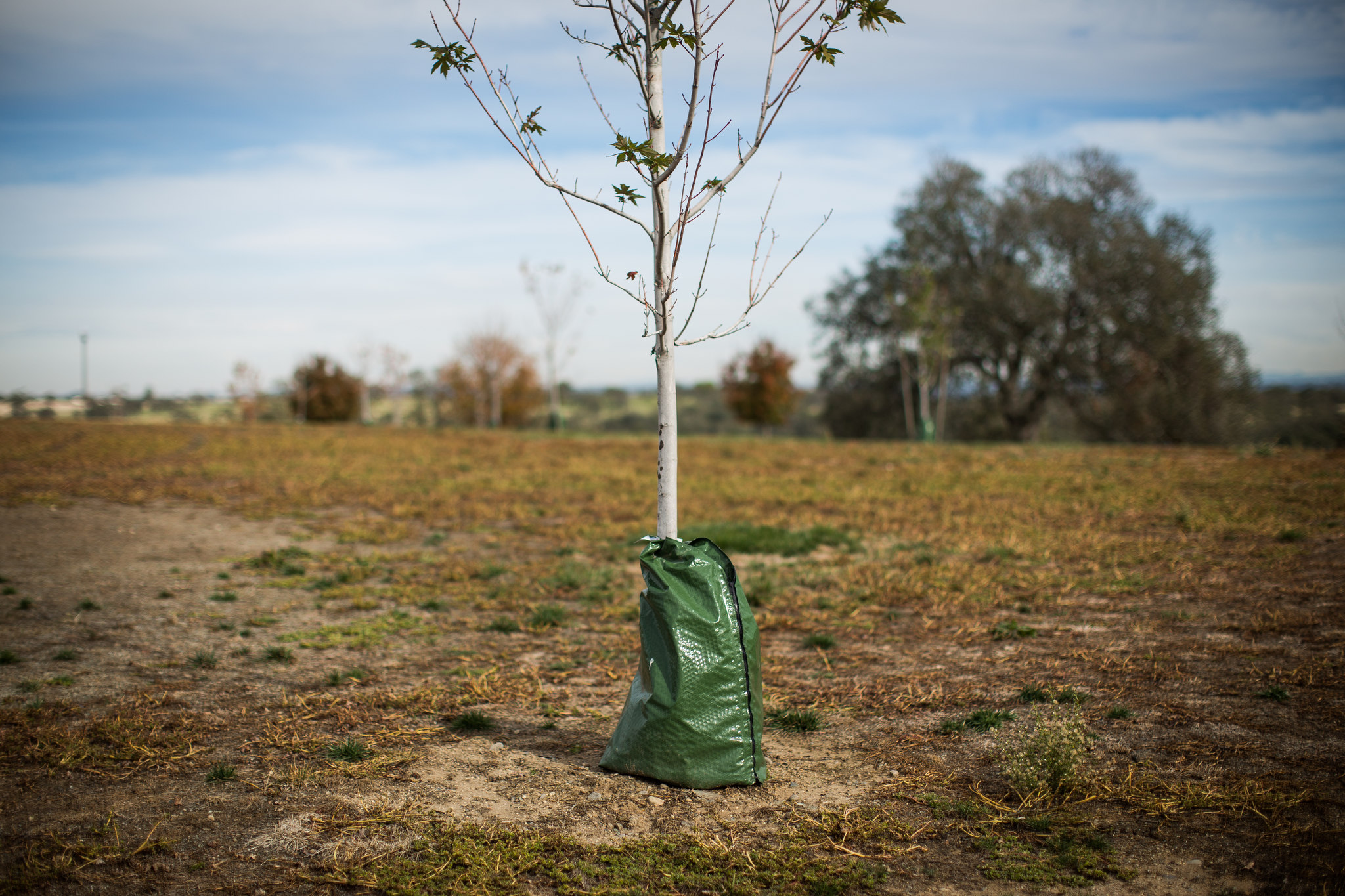
A tree is watered with a bag while the lawn is left to die in a Rocklin, California park, November 18, 2014. The City of Rocklin has taken many steps to reduce water use during California's unprecedented drought. CREDIT: Max Whittaker/Prime
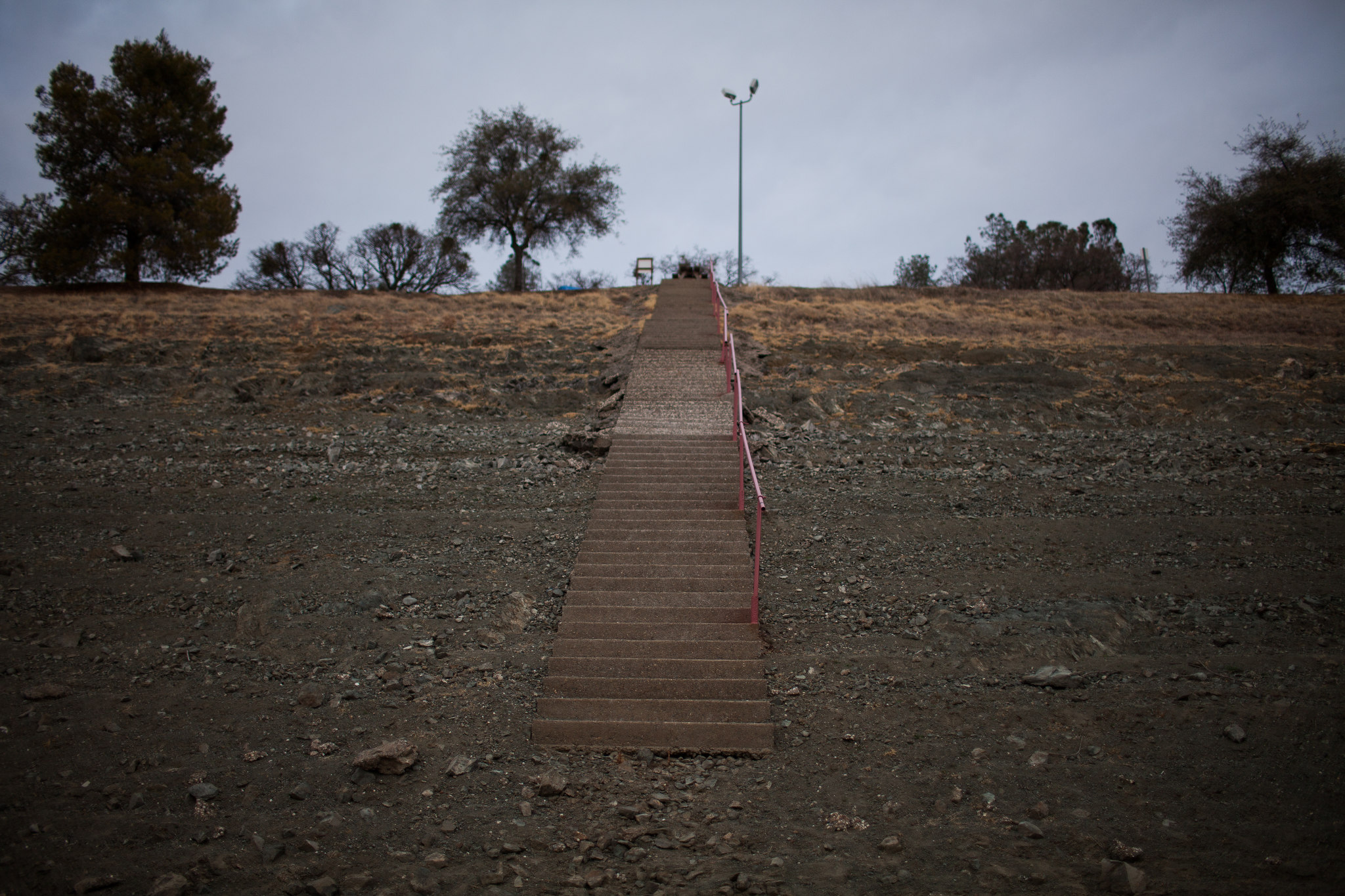
A stairway leads to nowhere at the Folsom Lake Marina as Folsom Lake recedes under drought conditions January 9, 2014 in Folsom, California.
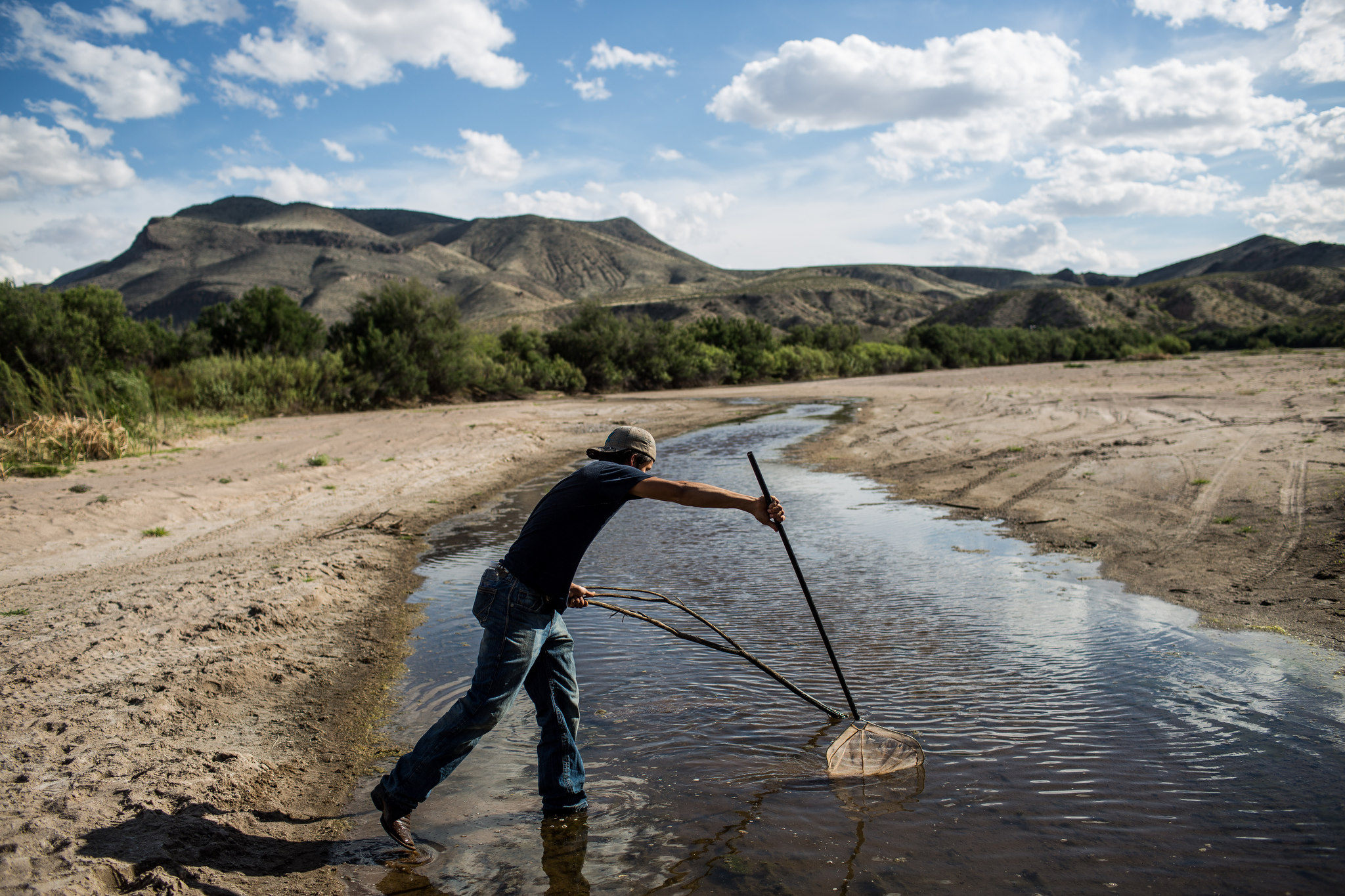
RADIUM SPRINGS, NM - APRIL 10, 2015: Oscar Escapita nets minnows on the trickle that is the Rio Grande. The Rio Grande runs nearly dry as the Elephant Butte Reservoir is refilled upstream. CREDIT: Max Whittaker for The New York Times
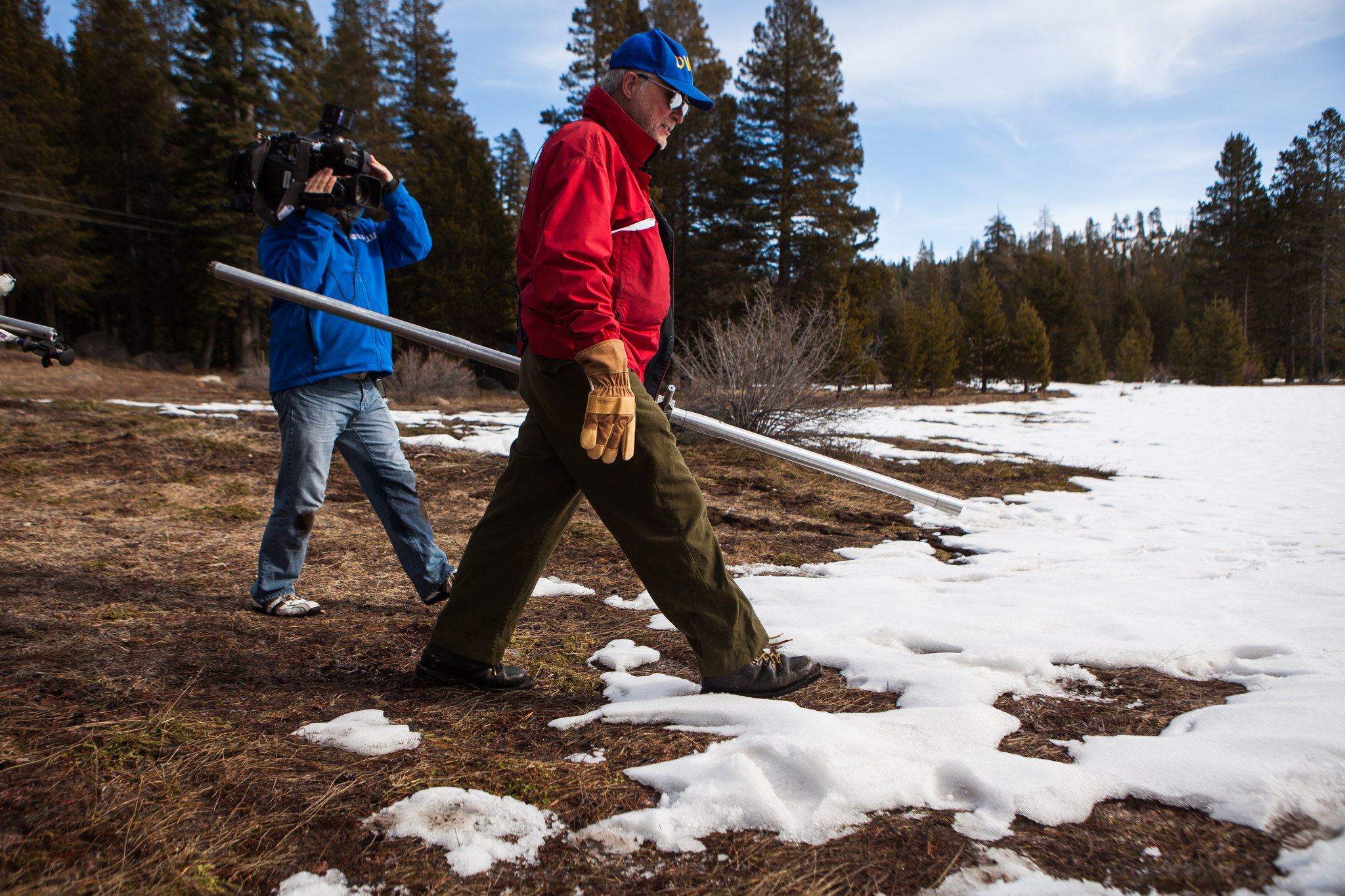
Frank Gehrke, chief of snow surveys for the California Department of Water Resources, walks into a meadow in Phillips, California to measure the snowpack on January 29, 2015. The reading at Phillips is 2.3 inches of water equivalent, 12% of the historic average for this location.
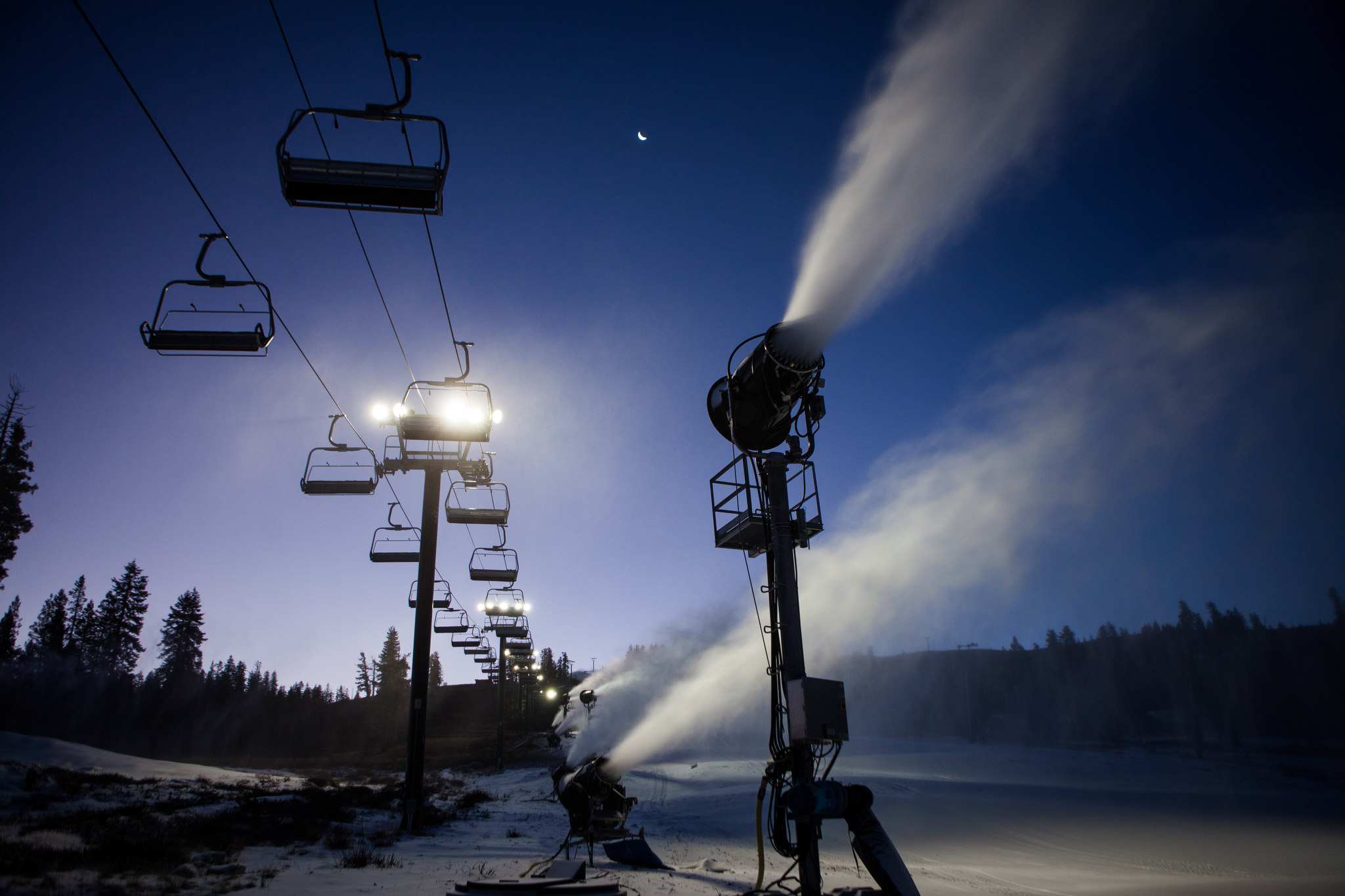
SODA SPRINGS, CA - NOVEMBER 17, 2014: Boreal Mountain Resort blows manmade snow to cover one run in order to open the next day.
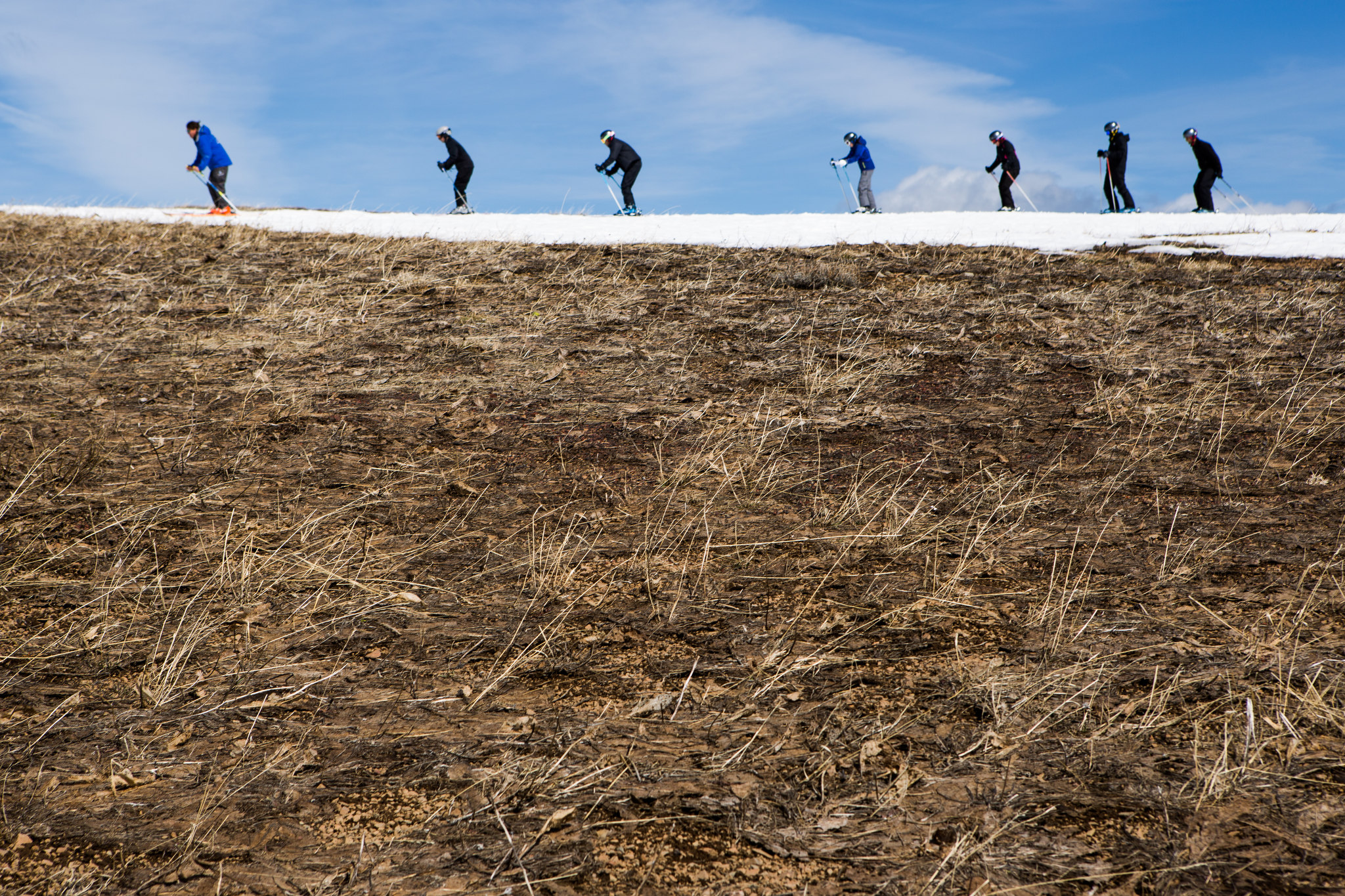
OLYMPIC VALLEY, CA- MARCH 21: Skiers thread their way through patches of dry ground at Squaw Valley Ski Resort, March 21, 2015 in Olympic Valley, California. Many Tahoe-area ski resorts have closed due to low snowfall as California's historic drought continues. (Photo by Max Whittaker/Getty Images)
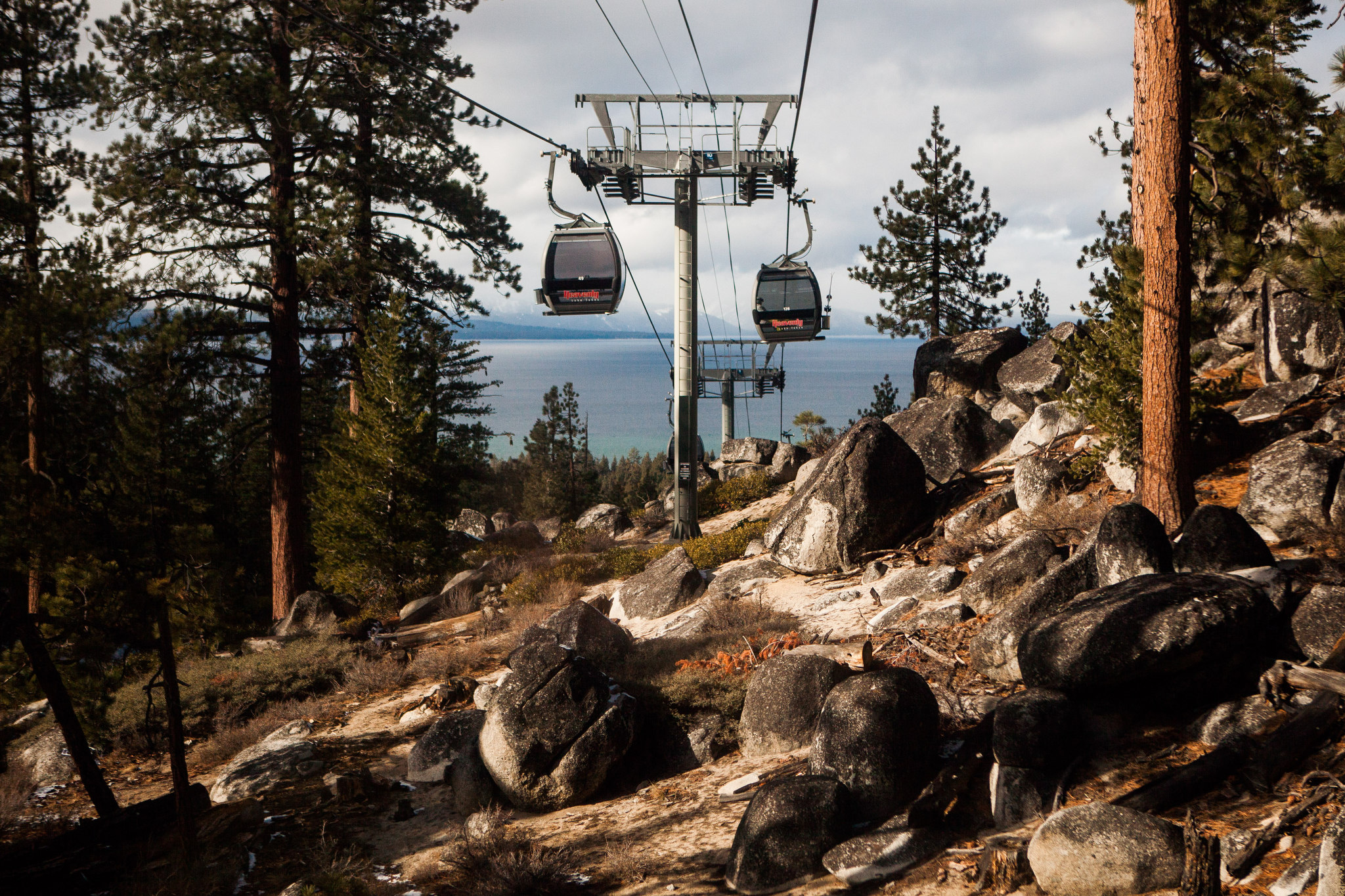
Heavenly Ski Resort's gondola whisks skiers past dry ground before reaching a high enough elevation for snow in South Lake Tahoe, California, December 17, 2014. Despite above average precipitation in Northern California, Tahoe ski resorts are still struggling to cover enough runs with skiable snow.
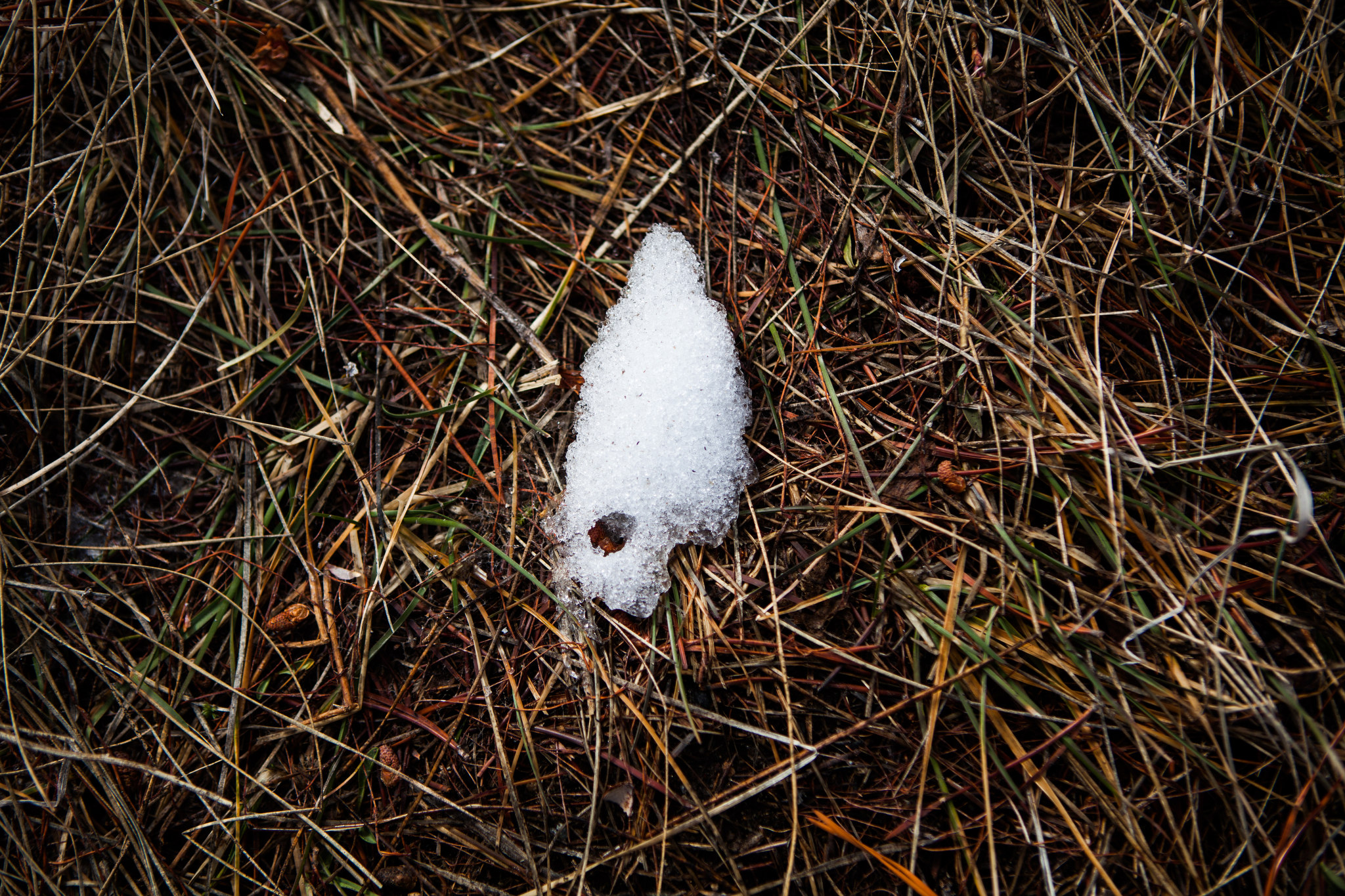
Snow melts in the meadow in Phillips, California where the California Department of Water Resources measured the snowpack on January 29, 2015. The reading at Phillips is 2.3 inches of water equivalent, 12% of the historic average for this location.

SACRAMENTO, CA - APRIL 2, 2015: A Caltrans sign advise Californians to limit watering in Sacramento. CREDIT: Max Whittaker for The New York Times
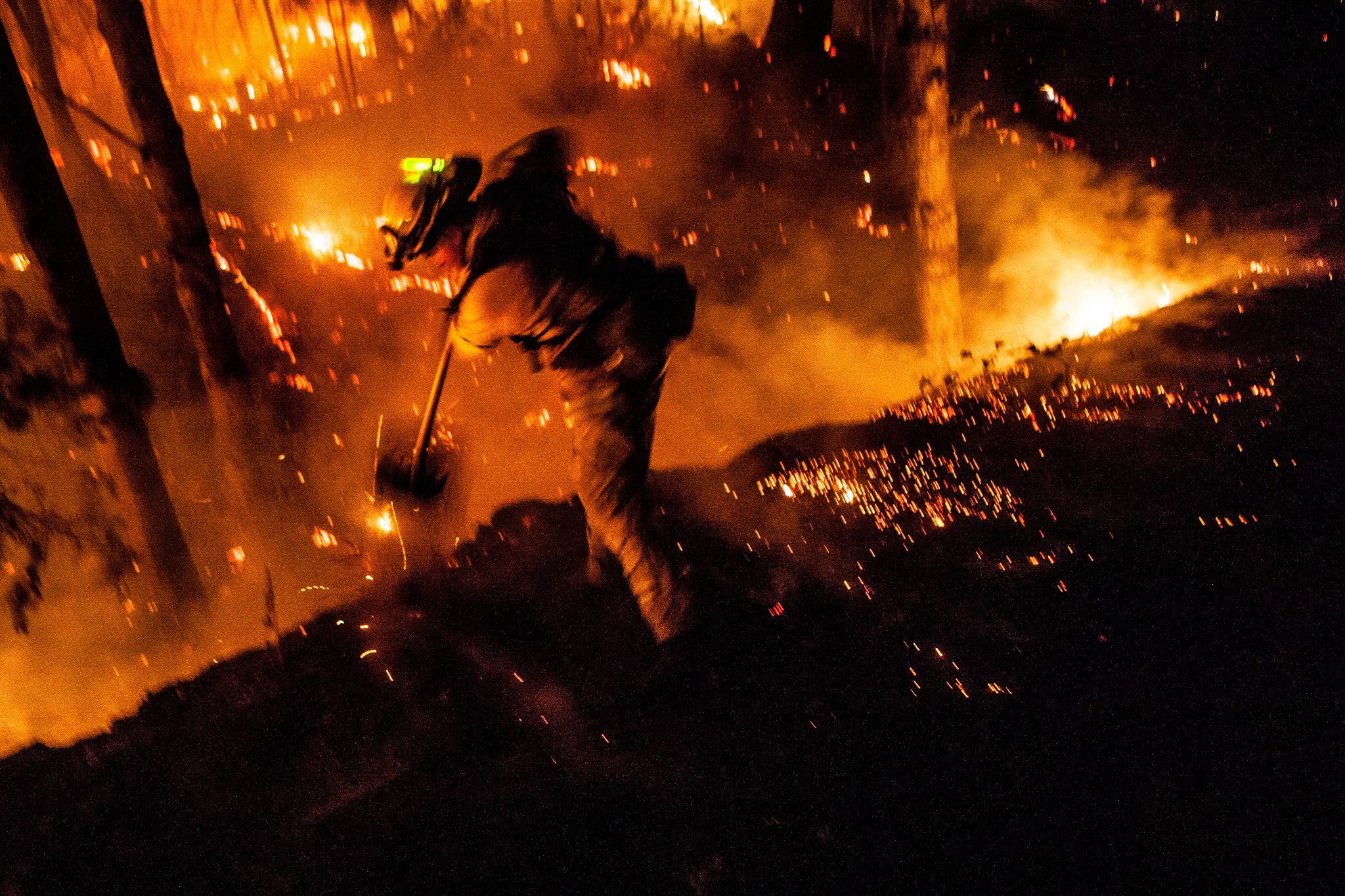
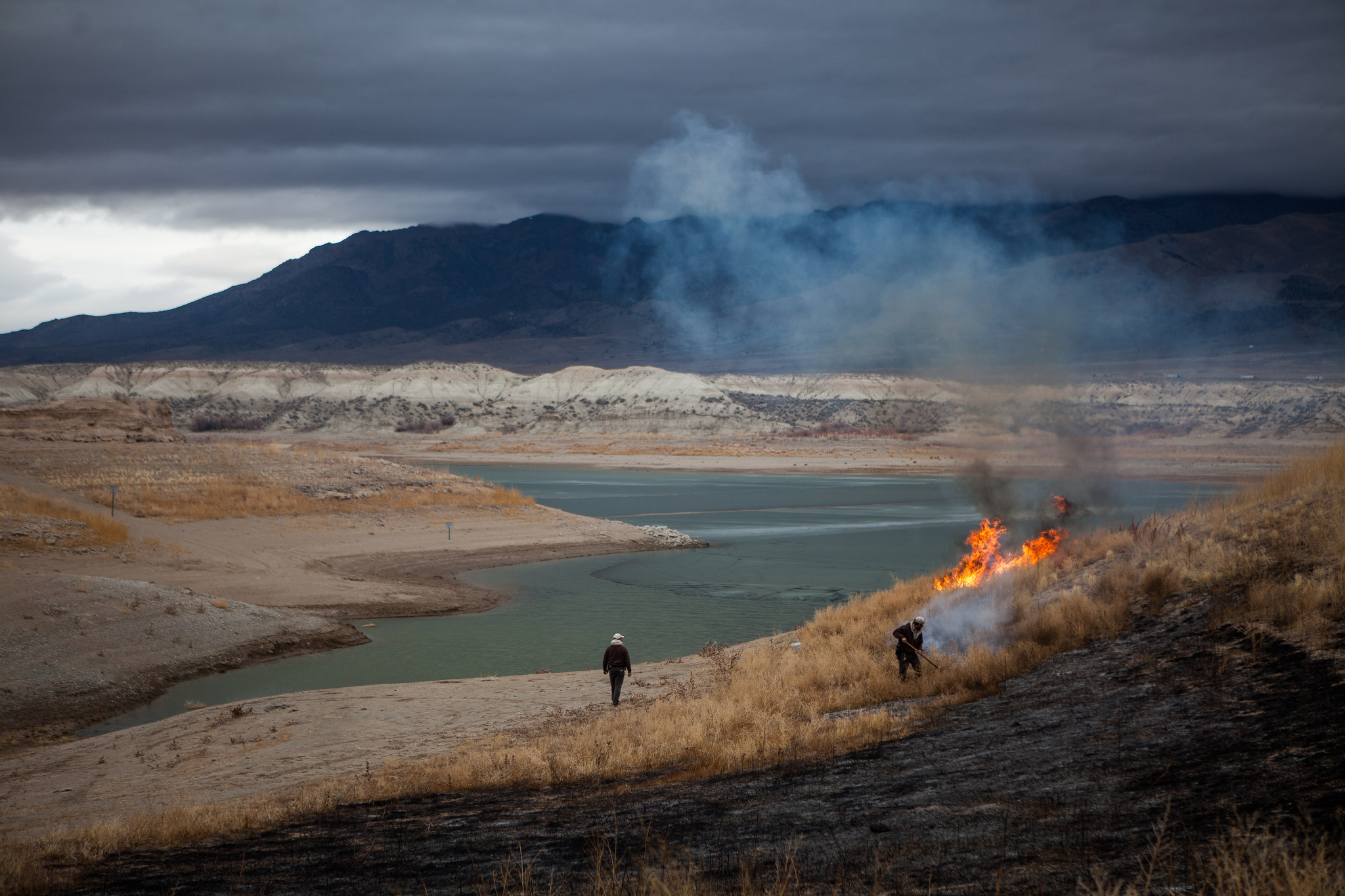
LOVELOCK, NV - JANUARY 29, 2014: State Park rangers burn weeds on the exposed lakebed of the Rye Patch reservoir which sits at 3.5% capacity as a drought emergency is declared in Nevada. CREDIT: Max Whittaker for The New York Times
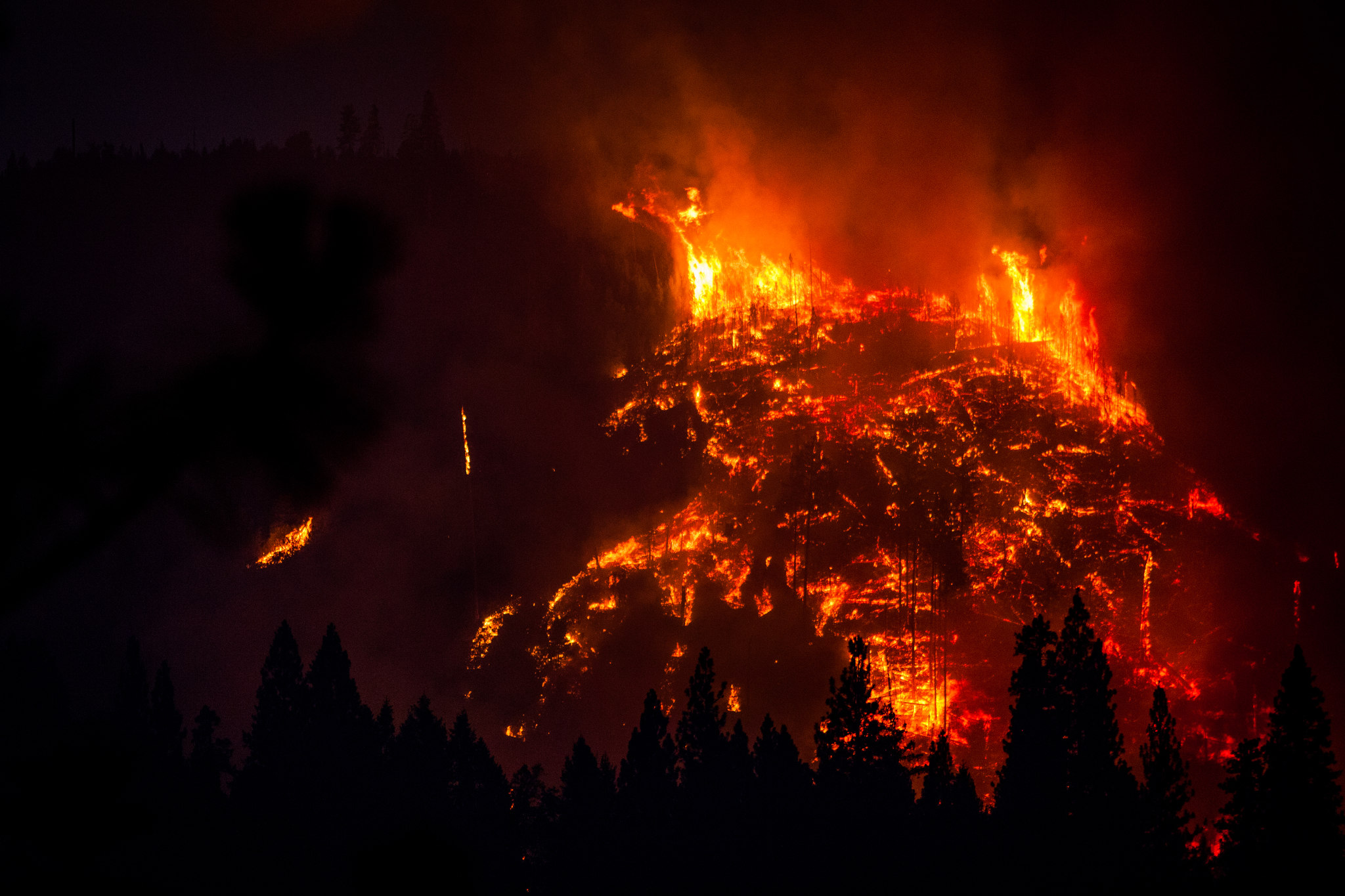
The Rim Fire burns near Buck Meadows, California, August 24, 2013. The Rim Fire burned 257,314 acres and is the third largest wildfire in California history.
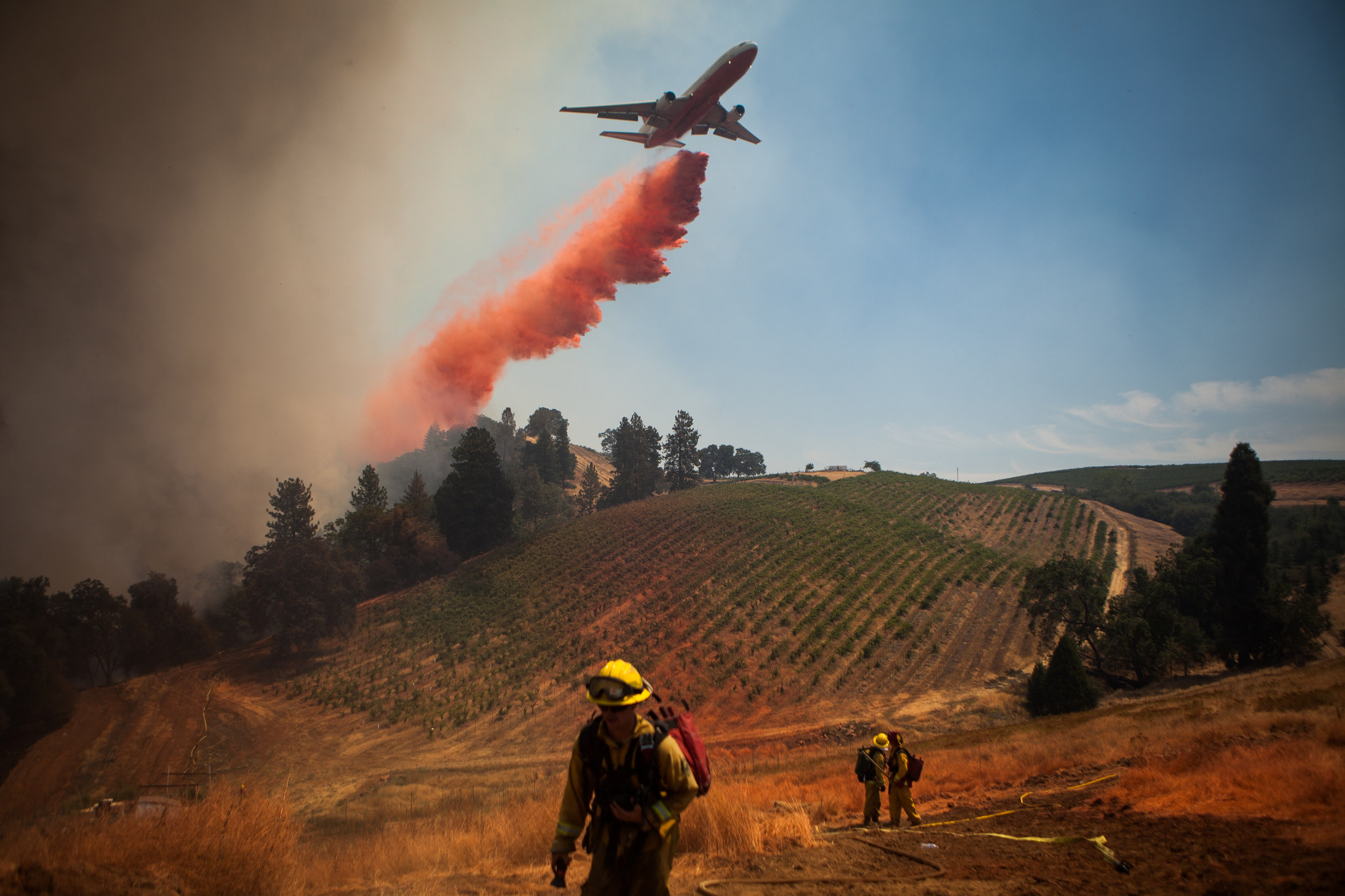
A plane drops fire retardant on a vineyard while battling the Sand Fire near Plymouth, California, July 26, 2014. The Sand Fire destroyed 20 homes and burned more than 4,200 acres near the town of Plymouth.
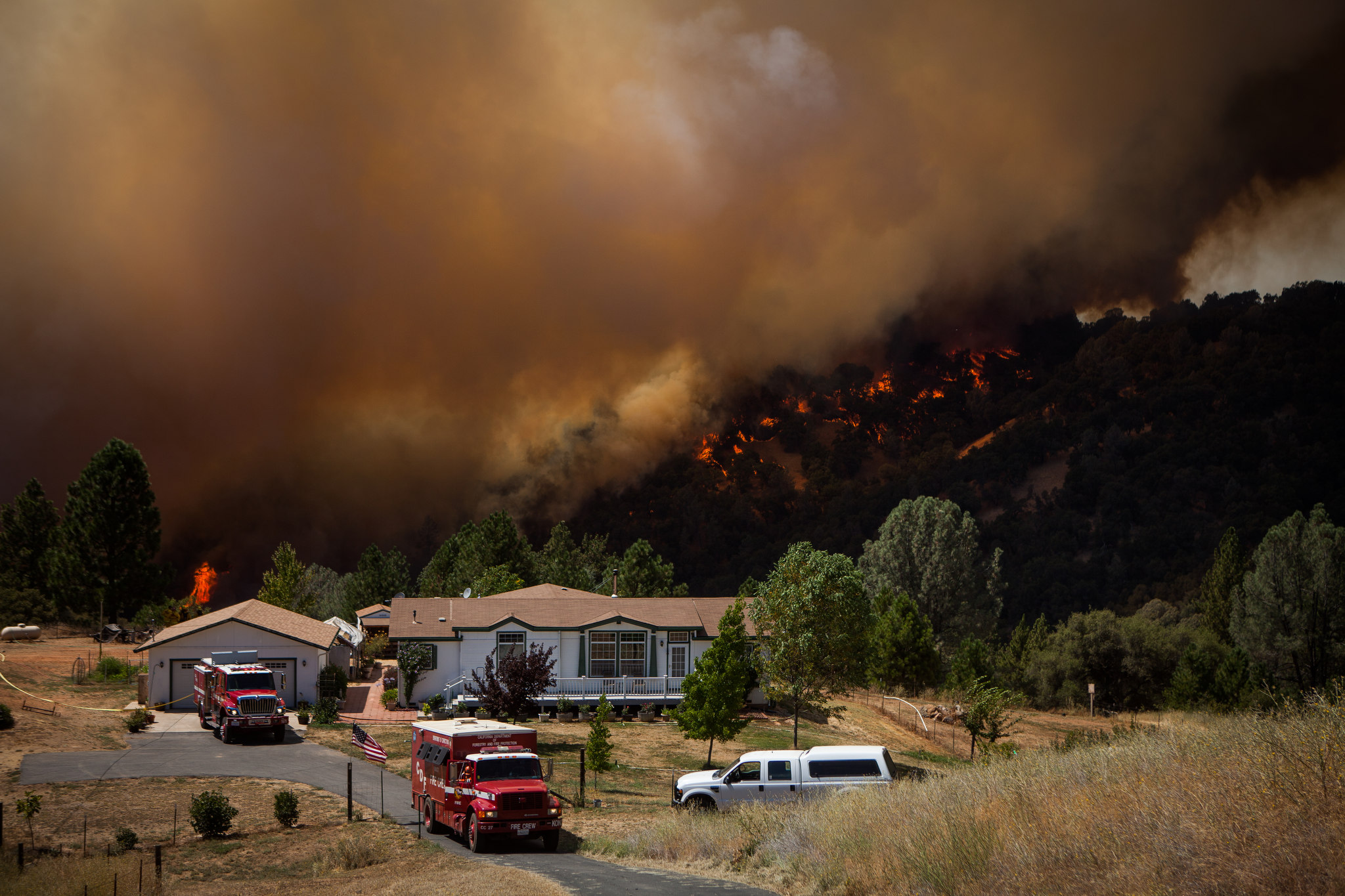
Firefighters protect an evacuated home while the Sand Fire burns behind it near Plymouth, California, July 26, 2014. The Sand Fire destroyed 20 homes and burned more than 4,200 acres near the town of Plymouth.
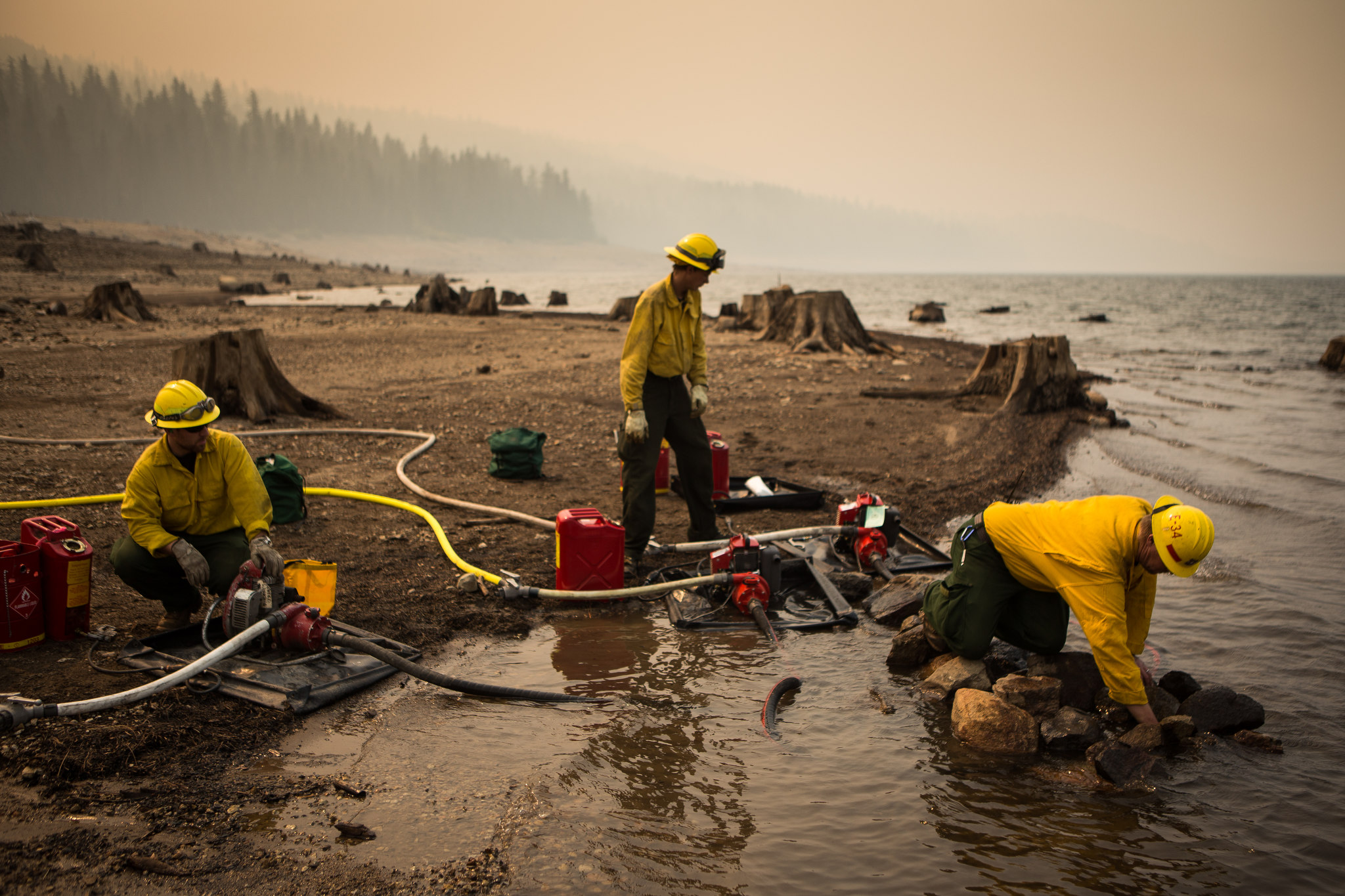
Forest Service firefighters and contractors pump water out of the already low French Meadows Reservoir to battle the King Fire, September 22, 2014.
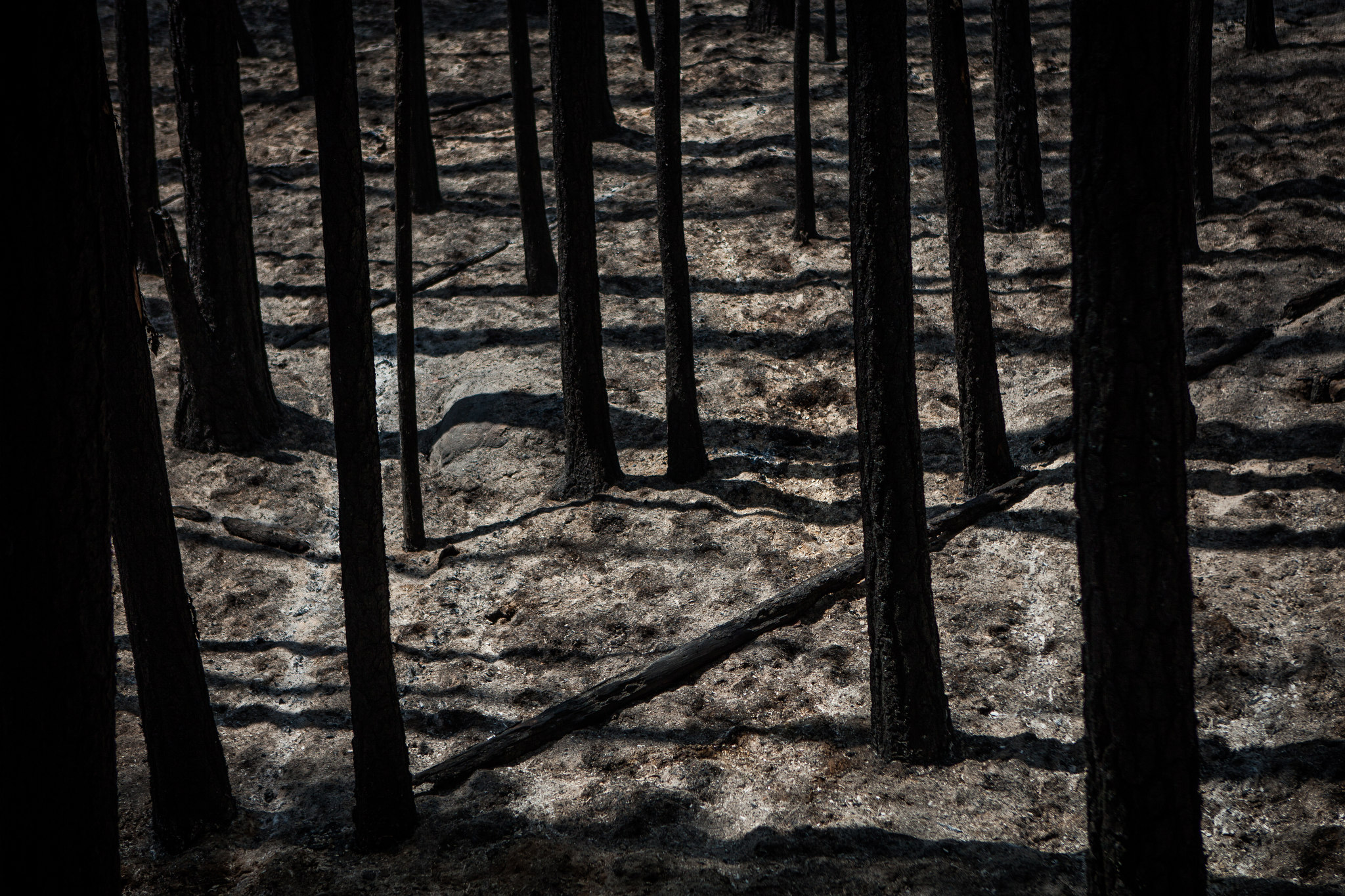
The remains of a forest burned by the Rim Fire just outside Yosemite National Park, California, August 24, 2013. The Rim Fire burned 257,314 acres and is the third largest wildfire in California history.
PROJECTS
Drought in the American West
By Max Whittaker
The American West is entering it’s fourth year of a historic drought. Climate change is playing a role, but there’s simply not enough water to support the increasing population and large-scale agriculture in what is essentially a desert.
